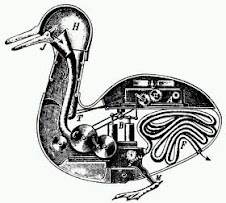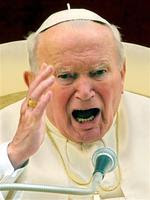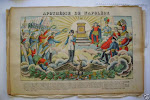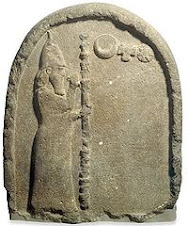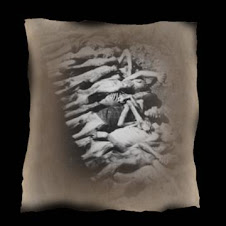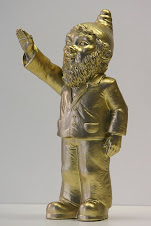How Jupiter Became the God of Science?
Quid faciat laetas segetes, quo sidere terram vertere- Maecenas, ulmisque vitis conveniat
What makes the cornfield smile, beneath what star, Maecenas and turn the earth and fasten vines to elms. ”(Virgil Georgica, 1-2;1-4)
http://www.kunstpedia.com/articles/618/1/The-King-and-the-Oracle/Page1.html
Tum pater omnipotens fecundis imbribus Aether coniugis in gremium laetae descendit,
Then Aether, sire omnipotent, leaps down With quickening showers to his glad wife's embrace, (Virgil, Georgics II) The Ethiopian myth spoke about “raining of light from heaven”.
http://en.wikipedia.org/wiki/Ganymede_%28mythology%29
“Sun...the leader, the prince and the stersman of the other stars, the soul and the ordering principle of the world, so large that it enlightens and fills up the whole universe...the orbits of Mercury and Venus follow him as his satellites.” - Cicero
Virgil's Abiogenesis
Magnus ab integro saeculorum nascitur ordo (Virgil, IV Eclogue)
The translation: „The great march of the centuries begins anew” misses the beef of the philosophical abiogenesis: ab integro...nascitur ordo” The Latin term integer denotes 'the whole thing' or 'number of whole things.'
"... all things are one, and the One is all things, seeing that all things were in the Creator before he created them all. And rightly has it been said of Him that He is all things, for all things are parts of Him. And this being so, all things are linked together, and connected one with another in a chain extending from the lowest to the highest ; so that we see that they are not many, or rather, that all are one." (=evolutionary Tree of Life-rp) Asclepius I, 2a. The heliocentric pharaoh Akhenaten called the sun 'One'
Spontaneous Generation also referred to as abiogenesis, the theory that living things arise de novo without living parents from lifeless matter. The attempt of the ancients and medievals to explain the origin of lower forms of life from natural causes, rather than attributing it directly to a supermundane or divine power, was scientifically respectable.(Aquinas). The Gentile Christians, like the Qumran sectarians and like the Pythagorean heliocentrists before them, styled themselves “the sons of light”. Those who spring from a “fountain of light” like Noah mentioned in the Genesis Apocryphon (1 Qap-Gen) do not have natural fathers. They live eternally like Melchizedek described in 11 Qmelchizedek. Accordingly, we learn from Heb 7:1-3 that He is without father or mother or genealogy, and has neither beginning of days nor end of life, but resembling the Son of God, he continues a priest forever.” In Qumran, and later in the Christian writings the title “Son of God” functioned exactly like in the Graeco-Hellenistic world, as a term denoting a nature... Thomas Aquinas believed in abiogenesis.
The belief that mankind is not the sole representative of intelligent life in the Universe is very old. And it is more than a belief: as the philosopher Metrodorus put it in the third century B.C. ‘to consider the Earth the only populated world in infinite space is as absurd as to assert that in an entire field sown with millet, only one grain will grow.” St. Paul refers to this when he says that he was caught up to the Third Heaven (cp. The Third Rock from the Sun) and heard unutterable words in the body, or out of the body, I cannot tell” (2 Cor. 12:2-4). St. John also says he was “in the Spirit” i.e. in an ecstasy – when he saw the apocalyptic vision (Rev. 1:10). There was a class of diviners among the ancient Greeks called Extatici who used to lie in trances, and when they came to themselves gave strange accounts of what they had seen while they were “out of the body.” 2 Cor. 12: 2-3; cp. The LSD Trips): “I know about one of Christ’s followers who was taken up into the Third Heaven fourteen years ago. I don’t know if the man was still in his body when it happened, but God certainly knows. As I said, only God really knows if this man was in his body at the time. But he was taken up into paradise, where he heard things that are too wonderful to tell.” (Cp. “And we have created over you 7 Heavens.” – The Qur’an 2.178)
The Gentile Christian leaders were soon driven by Jewish persecution from Jerusalem to the synagogues of Samaria and Syria. But soon two victories were won; henceforth the Gospel was to be preached to Gentiles and converts were freed from Jewish customs. The Apostle of the Gentiles could now carry a Gospel emancipated from Judaism. The Church of Saints Sergius and Bacchus, built on the acropolis hill at Nitsanah, one of the places in the Negev, through which the heavy caravan traffic passed both in Nabatean and Byzantine times, played an important role not only in religious but also in the business life of the community. Its presbyter was also the chief money lender, who, according to one of the papyri, was not above charging considerably more than the legal rate of interest. Of extraordinary importance was the discovery at Nitsanah of parts of an amazing library of wide ranging scope. It was very catholic in its collection, extending from several pages of the Acts of St. George and fragments of the most anti-Semitic Fourth Gospel and a Syriac religious text, to approximately a hundred pages of a Latin-Greek lexicon to Virgil. While the Jewish Christians (“The Twelve”) spoke that Jesus was born in Betlehem, the Gentile Christians (“The Seven”) stressed his “coming down” from heaven (Ouranos, Jn. 6:38).: “For I came down from heaven, not to do my own will...) In the Gospel of Matthew 9:12 Jesus said, that he “has come” into the world, not that he was born. “No man hath ascended up to heaven, but he that came down from heaven.” Jesus of the Fourth Gospel is a representative of “a new race descended from Heaven on high,” foretold by Virgil in his “Fourth Eclogue”. We must assume that there were comparable libraries in some of the other, important Byzantine towns in the Negev. Paul became the Apostle of the Gentiles and Virgil – the Prophet of the Gentiles.
The Juvenile Jesus lectures on Heliocentrism
In 1910 a German fiction writer Ernest Adler von der Planitz published a number of 5th century Coptic papyri and other ancient fragments found in a tomb at Sakkara and purchased by a certain scholar named Baron von Rabenau. The legends written down in the document entitled The Letter of Benan are an ingenious presentation, in the best folk manner, of the hidden years in the life of Jesus.
A far-famed Egyptian astronomer named Putiphra dispatched the High Priest Ranebchru to the land of the Hebrews (Unlike the Romans, he did not call it Palestine! Interestingly, there is no name Palestine in the Koran either!) to learn the meaning of the appearance of the new star, Siriu, or The Scorching One. In Betlehem he found a child born in a cave the very moment Siriu appeared in the heavens. Ranebchru promised his parents that the child will be raised under the tutelage of the great astronomer Putiphra and Pinehas rabbi of the Jewish temple in nearby On (Heliopolis). When Putiphra died 12 years later Jesus returned to his parents in Nazareth. During his visit to Jerusalem to celebrate the Passover he lectured in the temple all the learned doctors and rabbis on the principles of heliocentric astronomy and on the interstellar mysteries:
"Behold a greater than Solomon is here" (Jesus said of himself, Matthew 12: 41, 42).
“A learned astronomer was present in the assembly at the temple, and he arose and asked Jesus: 'What do you know about astronomy?' Jesus without hesitation or faltering, explained the number of spheres and the heavenly bodies, and the meaning of their numbers; he expounded on their different natures and operations; he defined their aspects, triangular, square or sextile; he interpreted their course, direct or retrograde; he gave the motion of the planets each day, and each hour of the day; and he ended with a commentary on the interstellar mysteries beyond the reach of reason. And the astronomer turned and asked: “Pray, who can that be.” But this stuff was not included in the canonical Gospels.
Verse 51 of the Syrian version (Peshitta) of Luke 2 elaborates the incident of the Gospel of Mark so that it will be reverberating throughout the following centuries:
“And philosopher who was there present, a skillful astronomer, asked Jesus the Lord whether he studied astronomy. And the Lord Jesus answered him and explained the number of the spheres, and of the heavenly bodies, their nature and operations, their oppositions; their aspects, triangular, square and sextile; their course, direct or retrograde; the twenty-four and sixtieth of twenty-fourths, and other things beyond the reach of reason.” Almost a verbatim copy of the Letter of Benan's summary of Jesus' lecture. But the Greek evangelists of the New Testament don't mention this lecture in one word. Philosophical heliocentrism could not have been reconciled with the Hebrew Bible.
Virgil, the Miracle Maker
The tomb known as "Virgil's tomb" is found at the entrance of an ancient Roman tunnel (also known as "grotta vecchia") in the Parco di Virgilio in Piedigrotta, a district two miles from old Naples, near the Mergellina harbor, on the road heading north along the coast to Pozzuoli. The site called Parco Virgiliano is some distance further north along the coast. While Virgil was already the object of literary admiration and veneration before his death, in the following centuries his name became associated with miraculous powers, his tomb the destination of pilgrimages and veneration. The poet himself was said to have created the cave with the fierce power of his intense gaze.
It is said that the Chiesa della Santa Maria di Piedigrotta was erected by Church authorities to neutralize this adoration and "Christianize" the site. The tomb, however, is a tourist attraction, and still sports a tripod burner originally dedicated to Apollo. (Wiki)
On the cover of John Paul II's The Roman Triptych is reproduced Michael Angelo's Libyan Sibyl from the Sistine Chapel. Well, it is a well-known fact from the Church history that the Christian fathers and their followers made themselves so ridiculous by their fatuous faith in the Sibyls that they were derisively called “Sibyllists” by the Pagans. Virgil was a “sibyllist” (http://www.infidels.org/library/historical/joseph_wheless/forgery_in_christianity/chapter_...)
The Pope caped his speech, rehabilitating Galileo in 1992, with a generous tribute to Galileo the “theologian”: ‘Paradoxically, Galileo, a sincere believer, showed himself to be more perceptive in this regard than the theologians who opposed him.’ In January of 2008 Pope Benedict XVI had the astronomical observatory that has been part of Castel Gandolfo, south of Rome, for more than 75 years dismantled. Galileo had been exiled out of the Vatican.
***
The following are excerpts from John E. Rembsberg's The Christ (chapter 8 His Character and Teachings)
Dr. Jules Soury's Diagnosis
Jesus cursed a living tree and it died; Mohammed blessed a dead tree and it lived. The alleged conduct of Jesus on many occasions, notably his harsh treatment of his mother, his abuse of the Pharisees, his purging the temple and his cursing the fig tree, is not the conduct of a rational being, but rather that of a madman. If these stories be historical they would indicate that he was not wholly responsible for his words and acts. Dr. Jules Soury, of the University of France, believes that he was the victim of an incurable mental disorder. In a work on morbid psychology, entitled Studies on Jesus and The Gospels, Dr. Soury cites a long array of seemingly indisputable facts in support of his theory. From his preface to the work, I quote the following:
"In the present work Jesus makes his appearance, perhaps for the first time, as a sufferer from a grave malady, the course of which we have attempted to trace.
"The nervous, or cerebral disorder, at first congestive and then inflammatory, under which he labored, was not only deep-seated and dangerous -- it was incurable. Among us at the present time that affection may be seen daily making kings, millionaires, popes, prophets, saints, and even divinities of poor fellows who have lost their balance; it has produced more than one Messiah.
"If we be right in the interpretation of data which has been followed in the study of morbid psychology, Jesus, at the time of his death, was in a somewhat advanced stage of this disorder. He was, to all appearance, cut off opportunely; the gibbet saved him from actual madness.
What was his first miracle?
"The Son of Man is come eating and drinking; and ye say, behold a gluttonous man and a winebibber" (Luke vii, 34).
John: "There was a marriage in Cana of Galilee.... And both Jesus was called, and his disciples, to the marriage. And when they wanted wine, the mother of Jesus saith unto him, They have no wine.... And there were set there six water pots of stone,...containing two or three firkins apiece. Jesus saith unto them, Fill the water pots with water. And they filled them up to the brim" (ii, 1-7). This water he turned into wine.
Here is Christ supplying a party already "well drunk" with more than one hundred gallons of wine. As they were intoxicated when he performed the miracle, would it not have been better for them and better for the millions who have accepted him as a moral guide, if at the beginning of the feast he had turned the wine into water?
The morality taught by Jesus suffers in comparison with that taught by Mohammed. Mohammed prohibited the use of intoxicating drink,and the Mohammedans are a temperate people; Jesus sanctioned the use of intoxicating drink, and the Christian world abounds with drunkenness.
Referring to the miracle at Cana, Strauss says: "Not only, however, has the miracle been impeached in relation to possibility, but also in relation to utility and fitness. It has been urged both in ancient and modern times, that it was unworthy of Jesus that he should not only remain in the society of drunkards, but even further their intemperance by an exercise of his miraculous power" (Leben Jesu, p. 584).
Did he oppose slavery?
All: He did not.
"At the time of the advent of Jesus Christ, slavery in its worst forms prevailed over the world. The Savior found it around him in Judea; the apostles met with it in Asia, Greece and Italy. How did they treat it? Not by denunciation of slave-holding as necessarily sinful." -- Prof. Hodge of Princeton.
"I have no doubt if Jesus Christ were now on earth that he would, under certain circumstances, become a slaveholder." -- Rev. Dr. Taylor of Yale.
Rousseau says: "Christ preaches only servitude and dependence.... True Christians are made to be slaves."
Did he favor marriage?
Matthew: He advocated celibacy, and even self-mutilation as preferable to marriage (xix, 10-12).
Following this teaching of their Master, Christians, many of them, have condemned marriage. A Christian pope, Siricius, branded it as "a pollution of the flesh." St. Jerome taught that the duty of the saint was to "cut down by the axe of Virginity the wood of Marriage." Pascal says: "Marriage is the lowest and most dangerous condition of the Christian."
G. W. Foote of England says: "Jesus appears to have despised the union of the sexes, therefore marriage, and therefore the home. He taught that in Heaven, where all is perfect, there is neither marrying nor giving in marriage."
"And I looked, and, lo, a Lamb stood on the mount Sion and with him an hundred forty and four thousand…These are they which were not defiled with women; for they are virgins. These are they which follow the Lamb whithersoever he goeth. These were redeemed from among men, being the first fruits unto God and to the Lamb." - Rev. 14:1-4
(In the time period of pedophile scandals rocking the Catholic Church it will be instructive to remind of a 1985 “New York Native” interview with Joseph Sonnabend (“leading AIDS doctor”). “The rectum”, Sonnabend said, “is a sexual organ, and it deserves the respect a penis gets and a vagina gets.” Anal intercourse has been the central activity for gay men and for some women for all of history. The “leading AIDS doctor” did not know that the people of Katmandu suffer from chronic intestinal parasites caused by drinking water contaminated with fecal matter. “Versatile” anal and oral sex and new behaviors such as analingus, or rimming facilitated the spread of otherwise difficult-to-transmit microbes. Gay men created almost laboratory conditions both to amplify STDs and then to spread these diseases throughout the world. And all these facts prove that the Bible is, indeed the God inspired Book of Books. What a shame that it is a Pope who wants to exile this Book from the memory of mankind! We already know that he will fail! Gay sex breaks every rule of decent hygiene; it is chemical and biological warfare on human societies.-rp)
What original rules of table observance did Jesus teach his disciples?
Matthew: To abstain from washing their hands before eating. "They wash not their hands when they eat bread" (xv, 2).
John: To wash their feet after eating. "He riseth from supper, and laid aside his garments; and took a towel and girded himself. After that he poured water into a basin, and began to wash the disciples' feet, and to wipe them with the towel wherewith he was girded" (xiii, 4, 5).
The proneness of Christ's followers to neglect his ordinances and precepts which require some sacrifice or effort to obey, and the readiness with which they observe those which do not, find a fitting illustration in the reception accorded these teachings. While the early Christians, many of them, accepted the first as a religious obligation not to be violated, the second was ignored. Writing of Christian monks and nuns, Lecky says: "The cleanliness of the body was regarded as a pollution of the soul and the saints who were most admired had become one hideous mass of clotted filth St. Athanasius relates with enthusiasm how St. Antony, the patriarch of monachism, had never, to extreme old age, been guilty of washing his feet.... St. Abraham the hermit, however, who lived for fifty years after his conversion, rigidly refused from that date to wash either his face or feet.... St. Euphraxia joined a convent of one hundred and thirty nuns, who never washed their feet, and who shuddered at the mention of a bath" (European Morals, Vol. II, pp. 109, 110).
A year or so ago the McCarthyist article by Prof. Itzhak Galnoor was posted here The victim of Galnoor's witchhunt and McCarthyist persecution was Prof. Nahum Rakover, a distinguished scholar of Jewish law. In the 1990s he was an advisor for the Israeli government in matters of Jewish law. After the 1994 Supreme Court decision concerning the granting of spousal perquisites to the gay partner of an El Al steward, Rakover was asked to advise the Knesset what the position of Jewish law was on homosexuality. Rakover stated that Jewish law regards homosexuality as an abomination morally equivalent to bestiality*, as stated clearly in Leviticus. He did not say this was his own personal opinion, he simply answered the question about Jewish law, as he was being paid and employed to do.
Hebrew University Prof wants Academic Freedom to be Denied to God and Moses
Did he not teach the doctrine of demoniacal possession and exorcism?
Synoptics: He did.
After alluding to the prevalency of superstition among the Jews of this period, Renan says: "Jesus on this point differed in no respect from his companions. He believed in the devil, whom he regarded as a kind of evil genius, and he imagined, like all the world, that nervous maladies were produced by demons who possessed the patient and agitated him" (Life of Jesus, p. 59). Dr. Geikie says: "The New Testament leaves us in no doubt of the belief, on the part of Jesus and the Evangelists, in the reality of these demoniacal possessions" (Life of Christ, Vol. II, p. 573).
Demonology was born of ignorance and superstition. In this debasing superstition Jesus believed. It was a part of his religion, and has remained a part of Christianity, for while the more intelligent of his professed disciples have outgrown this superstition they have to the same extent outgrown Christianity. The more ignorant, the more depraved, and, at the same time, the more devout of his followers, still accept it.
Regarding this superstition, the author of Supernatural Religion says: "The diseases referred to by the gospels, and by the Jews of that time, to the action of devils, exist now, but they are known to proceed from purely physical causes. The same superstition and medical ignorance would enunciate the same diagnosis at the present day. The superstition and ignorance, however, have passed away, and, with them, the demoniacal theory. In that day the theory was as baseless as in this. It is obvious that, with the necessary abandonment of the theory of 'possession' and demoniacal origin of disease, the largest class of miracles recorded in the gospels is at once exploded. The asserted cause of the diseases of this class, said to have been miraculously healed, must be recognized to be a mere vulgar superstition" (p. 159).
What did he require of his disciples?
"If any man come to me, and hate not his father, and mother, and wife, and children, and brethren and sisters, yea, and his own life also, he cannot be my disciple" (Luke xiv, 26).
It is scarcely possible in this age of enlightenment and unbelief to realize what sorrows and miseries these accursed teachings of Christ once caused. The eminent historian Lecky, in his History of European Morals, has attempted to describe some of their awful consequences. From his pages I quote the following:
"To break by his ingratitude the heart of the mother who had borne him, to persuade the wife who adored him that it was her duty to separate from him forever, to abandon his children, uncared for and beggars, to the mercies of the world, was regarded by the true hermit as the most acceptable offering he could make to his God. His business was to save his own soul. The serenity of his devotion would be impaired by the discharge of the simplest duties to his family. Evagrius, when a hermit in the desert, received, after a long interval, letters from his father and mother. He could not bear that the equable tenor of his thought should be disturbed by the recollection of those who loved him, so he cast the letters unread into the fire. A man named Mutius, accompanied by his only child, a little boy of eight years old, abandoned his possessions and demanded admission into a monastery. The monks received him, but they proceeded to discipline his heart. 'He had already forgotten that he was rich; he must next be taught to forget that he was a father' His little child was separated from him, clothed in dirty rags, subjected to every form of gross and wanton hardship, beaten, spurned and ill-treated. Day after day the father was compelled to look upon his boy wasting away with sorrow, his once happy countenance forever stained with tears, distorted by sobs of anguish. But yet, says the admiring biographer, 'though he saw this day by day, such was his love for Christ, and for the virtue of obedience, that the father's heart was rigid and unmoved' (Vol. II, 125, 126).
Was he rude?
Relate his treatment of the Pharisee who invited him to dine with him.
Luke: "And as he spake, a certain Pharisee besought him to dine with him; and he went in, and sat down to meat. And when the Pharisee saw it, he marveled that he had not first washed before dinner. And the Lord said unto him, now do ye Pharisees make clean the outside of the cup and the platter, but your inward part is full of ravening and wickedness, Ye fools ... hypocrites!" (xi, 37-44.)
Was such insolence of manners on the part of Jesus calculated to promote the interest of the cause he professed to hold so dear at heart? Supposing a Freethinker were to receive an invitation to dine with a Christian friend and were to repay the hospitality of his host with rudeness and abuse, interrupting the ceremony of "grace" with an oath or a sneer, and showering upon the head of his friend such epithets as "hypocrite" and "fool." Would such insolent behavior have a tendency to gain for him the world's esteem or aid the cause he represents? And are we to approve in a God conduct that we regard as detestable in a man? It may be urged that God is not subject to the rules of human conduct. Grant it; but is it necessary for him in order to exhibit his divine character to assume the manners of a brute?
Roman Pytel, Ph.D.
I was invited to publish my article At the Sources of the Copernican Astronomy in a Polish magazine of the Friends of Astronomy (Urania) by a Polish astronomer who studied in Moscow. The man, in order to survive, is now teaching ecology i.e. the science of worshiping the Copernican goddess Gaia whom pope John Paul II hugged on his every pilgrimage.
Wednesday, August 25, 2010
Sunday, August 22, 2010
From Constantine to Galileo
Rome's Perennial War on the Bible
Constantinean "Christianity"
Roman Emperors Diocletian and Galerius ordered all the Christians in North Africa to hand over the Scriptures for burning. They were also ordered to burn incense to the statues of the Caesars. Many refused to give up the Scriptures and worship Caesar, so Christian blood flowed like a river.
The last great persecution ended when Constantine became Emperor of the West. Together with Emperor Licinius, he issued an edict of toleration called the Edict of Milan.
This edict of toleration did not apply to Christians who would not join his new imperial "Christianity."
This edict excluded many of the North African survivors of the persecution. Those surviving Christians referred to people who handed over the Scriptures as traditores (traitors) and insisted on their rebaptism.
Josephus, an Imperial Christian
In Wars, 5, 9. 4, he retails to us the speech which he says he made to the defenders on the walls. It is a survey of the past history, quite on the lines of the Deuteronomic historians: the nation's and Jerusalem's fate has ever depended upon the will of God according to the people's righteousness or wickedness. The present calamity has come as divine punishment, although it is not too late to recognize their sins and surrender to the Romans. But things have come to such a pass that 'I think that God has fled from the sanctuary and stands with those who fight against you'. One is reminded of a certain prophet's vision of the dramatic departure of the Glory of the Lord from His temple (Ezek. 10). In the preceding paragraph (§ 3) he pictures how invincible is the dominion of the Romans, a manifest token of the will of God and how 'fortune' (τυχη) has on all sides gone over to them, and God, having passed the dominion about among the nations, is now in Italy' (νυν επι της Ιταλιας ειναι). Josephus also reports that two Prisees – Pollion and Samais, his student, - advised the populace to open the gates of Jerusalem to Herod, when herod put the city under siege. The present-day version of this theology says that the Jewish people of today had no claim to the land of Israel because the church (or New Age) replaced Israel.
The “Christianity” of the Edict of Milan
“When I, Constantine Augustus, as well as I, Licinius Augustus, fortunately met near Mediolanurn (Milan), and were considering everything that pertained to the public welfare and security, we thought, among other things which we saw would be for the good of many, those regulations pertaining to the reverence of the Divinity ought certainly to be made first, so that we might grant to the Christians and others full authority to observe that religion which each preferred; whence any Divinity whatsoever in the seat of the heavens may be propitious and kindly disposed to us and all who are placed under our rule. And thus by this wholesome counsel and most upright provision we thought to arrange that no one whatsoever should be denied the opportunity to give his heart to the observance of the Christian religion, of that religion which he should think best for himself, so that the Supreme Deity,* to whose worship we freely yield our hearts) may show in all things His usual favor and benevolence.”
Who is the Supreme Deity? - Julius Caesar had been enrolled in the pantheon of Roman gods in 42 BC, and the comet, as described in Octavian’s memoires, was considered the soul of the divine Julius Caesar approving of his heir. Octavian took the title son of god, and when he had secured the empire for himself in 27 BC took the title Augustus, effectively, “the Most High”! It was a divine title, and altars were set up to Augustus the God in some Roman provinces. The Title “The Most High” was borrowed from the cult of Jupiter OPTIMUS MAXIMUS.
In his Oration to the Assembly of the Saints Emperor Constantine claimed that "Jesus Christ, Son of God, Saviour, Cross" was the one pointed in a Prophetic Acrostic of the Erythrean Sibyl, because “he wanted to have nothing in common with this odious people (meaning Jews).”
Here is a relevant passage from H.P. Blavatsky's The Esoteric Character of the Gospels: “There is still. Another and far more weighty proof that the name Christos is pre-Christian. The evidence for it is found in the prophecy (without quotation marks – rp) of the Erythrean Sibyl. We read it in (IESOUS CHREISTOS THEOU HUIOS SOTER STAUROS). Read esoterically, this string of meaningless detached nouns, which has no sense to the profane, contains a real prophecy – only not referring to Jesus – and a verse from the mystic catechism of the initiate. The prophecy relates to the coming down upon the earth of the Spirit of Truth (Christos), after which advent – that has once more nought to do with Jesus – will begin the Golden Age...”
Jesus means Son of Ieso
The secret doctrine teaches that the first two words IESOUS CHREISTOS mean simply “son of Iaso, a Chrestos,” or servant of the oracular god. Indeed IASO is in the Ionic dialect IESO and the expression Iesous – in its archaic form, (IESOUS) – simply means “the son of Iaso or Ieso, the “healer” i.e. (ho Iesous) (uios). No objection, assuredly, can be taken to such rendering, or to the name being written Ieso instead of Iaso, since the first form is Attic, therefore incorrect, for the name is Ionic. “Ieso” from which “Ho Iesous” (son of Ieso) i.e., a genetive, not a nominative – is Ionic and cannot be anything else, if the age of the Sibylline book is taken into consideration. Nor could the Sibyl of Erythrea have spelt it originally otherwise, as Erythrea, her very residence, was a town in Ionia (from Ion or Janus) opposite Chios, and that the Ionic preceded the attic form.
Leaving aside in this case the mystical signification of the now famous Sibylline sentence, and giving its literal interpretation only, on the authority of all that has been said, the hitherto mysterious words would stand; “Son of IASO, CHRESTOS (the priest or servant) (of the) SON of (the) GOD (Apollo) the SAVIOR from the Cross” - (of flesh or matter). (http://www.theosociety,org/pasadena/hpb-sio/sio-eso2.htm)
Here are the words of Constantine from his Oration: “It is evident that the virgin uttered these verses under the influence of Divine inspiration. And I cannot but esteem her blessed, whom the Saviour thus selected to unfold his gracious purpose towards us. That this Prophecy respecting our Saviour was not the Fiction of any Member of the Christian Church, but the Testimony of the Erythraean Sibyl, whose Books were translated into Latin by Cicero before the coming of Christ. Also that Virgil makes mention of the same, and of the Birth of the Virgin's Child: though he spoke obscurely of this Mystery from Fear of the Ruling Powers.”
The Historical Background of Constantine's Oration
The original Aramaic-speaking community of Jews with a Christian orientation, or “Jewish Christians”, in Jerusalem, whose faith and praxis had still largely remained within the framework of Judaism, had been succeeded outside Jerusalem and Israel by a Greek-speaking community made up of “Gentile Christians.” These had fused Christianity with Hellenistic philosophy and had made it the basis of a wholly new religion (Constantine's “Christianity”). “The Seven”, all of whom have purely Greek names were probably relatively independent of the group of apostles representing the Hebrews or “The Twelve”, who represented the 12 tribes of Israel. Acts reports a conflict which comes to a climax with the arrest and stoning of Stephen and the expulsion from Jerusalem of the Hellenistic Jewish Christians, but not the Aramaic Christians. A Gentile Christianity without the Law only gradually took its place in Antioch alongside a Hellenistic Jewish Christianity which was critical of the Law and which continued to have an independent existence. Probably in similar circumstances migrated to Damascus the Jewish Pythagorean heliocentrists i.e. the Essenes with their Teacher of Righteousness. Had not Jesus’ teaching contained a kernel of opposition to Judaism, Paul could never in the name of Jesus have set aside the ceremonial laws, and broken through the barriers of national Judaism. Jesus was a rabbi with a difference. There was a quite distinctive note of authority (dogmatism!) on his words such as is missing even from the Old Testament prophets. They said “Thus says the Lord; He said “I say to you”. A closer parallel is provided by the Qumran Teacher of Righteousness. Paul quotes the Torah 80 times only to do away with it; he invented an un-Jewish disease, original sin, in order to cure it with an anti-Jewish means – with a human sacrifice as an atoning death. He became everyman to everyone (a pimp to prostitutes?); he was thus prepared to abandon his principles for the sake of propaganda (opportunist); he falsified the faith of Jesus so that it became faith in Jesus; he transformed creation optimism of Genesis, according to which human beings are good, into a Hellenistic pessimism according to which human beings are too sinful and too weak by nature to prove themselves worthy of redemption without the grace of God.
The Gentile Christian leaders were soon driven by Jewish persecution from Jerusalem to the synagogues of Samaria and Syria. But soon two victories were won; henceforth the Gospel was to be preached to Gentiles and converts were freed from Jewish customs. The Apostle of the Gentiles could now carry a Gospel emancipated from Judaism. The Church of Saints Sergius and Bacchus, built on the acropolis hill at Nitsanah, one of the places in the Negev, through which the heavy caravan traffic passed both in Nabatean and Byzantine times, played an important role not only in religious but also in the business life of the community. Its presbyter was also the chief money lender, who, according to one of the papyri, was not above charging considerably more than the legal rate of interest. Of extraordinary importance was the discovery at Nitsanah of parts of an amazing library of wide ranging scope. It was very catholic in its collection, extending from several pages of the Acts of St. George and fragments of the most anti-Semitic Fourth Gospel and a Syriac religious text, to approximately a hundred pages of a Latin-Greek lexicon to Virgil. While the Jewish Christians (“The Twelve”) spoke that Jesus was born in Betlehem, the Gentile Christians (“The Seven”) stressed his “coming down” from heaven (Ouranos, Jn. 6:38).: “For I came down from heaven, not to do my own will...) In the Gospel of Matthew 9:12 Jesus said, that he “has come” into the world, not that he was born. “No man hath ascended up to heaven, but he that came down from heaven.” Jesus of the Fourth Gospel is a representative of “a new race descended from Heaven on high,” foretold by Virgil in his “Fourth Eclogue”. We must assume that there were comparable libraries in some of the other, important Byzantine towns in the Negev. Paul became the Apostle of the Gentiles and Virgil – the Prophet of the Gentiles.
The early apologist of Galileo, the Dominican friar. Campanella in his book Apologia pro Galileo (Frankfurt 1623) pointed out that Galileo shared Muhammad’s belief in “many worlds with lands and seas, and with human inhabitants. Muhammad, for political reasons, rejected the idea of the Biblical Eden planted by God on earth and embraced instead the idea of the garden of Immortality that the Babylonian myth placed in Heaven. Unlike the Biblical Adam who was simply “sent forth from the garden of Eden” (Gen. 3:23), the Koran’s Adam was “sent down from the garden” (Sura Ta-Ha 20:123). Similarly, in the so-called Gospel of the Syrian heretic Marcion Jesus was send down:
In the fifteenth year of Tiberius Caesar,
Pontius Pilate being governor of Judea,
Jesus descended [out of heaven] into Capernaum, a city in Galilee,
and was teaching [in the synagogue] on the Sabbath days;
And they were astonished at his doctrine. (3:1/4:31)
The secret NASA footage posted all over the Internet shows the alien moon base located on the Dark Side of the moon. (NASA Launches Effort for Closer Cooperation with Israel, (Shevat 10, 5770, 25 January 10 10:47, by Tzvi Ben Gedalyahu, Israel national News)
“To believe that God created a plurality of worlds, at least as numerous as what we call stars, renders the Christian (and Jewish-rp)) system of faith at once little and ridiculous and scatters in the mind like feathers in the air.” (Tom Paine)
Not all who interpreted the poem christocentrically did so through dishonest rearrangement and omission of lines, like Emperor Constantine did. Saint Augustine (354-430 A.D.) saw portents of Christ’s birth in the Eclogue, however, he attributed this not to Virgil, but to the Sibylline oracle. Although he had a high regard for Virgil, he believed the actual prophecy was from the mouth of the Sibyl rather than the poet himself. Virgil, therefore, prophesied of Christ’s birth unwittingly. Jerome (327-420 A.D.) expressed skepticism about the "prophecy", saying that Virgil could not have been a Christian without Christ. However, as Bourne points out, the very fact that Jerome denied this possibility indicates the prevalence of christocentric readings of the Eclogue.
One of the best-known interpretations of the Eclogue is found in Divina Commedia by Dante Alighieri (1265-1321), wherein Virgil is portrayed as the poet’s guide through much of the unseen world. It is clear that Dante’s admiration of Virgil was not simply on account of his skill as a poet; Dante believed Virgil to be a bearer of divine truth. In one portion of the text, Dante has the poet Statius, whom Dante supposed to be a Christian, attribute his interest in Christianity to Virgil’s writings, specifically to the Fourth Eclogue.
The tomb known as "Virgil's tomb" is found at the entrance of an ancient Roman tunnel (also known as "grotta vecchia") in the Parco di Virgilio in Piedigrotta, a district two miles from old Naples, near the Mergellina harbor, on the road heading north along the coast to Pozzuoli. The site called Parco Virgiliano is some distance further north along the coast. While Virgil was already the object of literary admiration and veneration before his death, in the following centuries his name became associated with miraculous powers, his tomb the destination of pilgrimages and veneration. The poet himself was said to have created the cave with the fierce power of his intense gaze.
It is said that the Chiesa della Santa Maria di Piedigrotta was erected by Church authorities to neutralize this adoration and "Christianize" the site. The tomb, however, is a tourist attraction, and still sports a tripod burner originally dedicated to Apollo. (Wiki)
On the cover of John Paul II's The Roman Triptych is reproduced Michael Angelo's Libyan Sibyl from the Sistine Chapel. Well, it is a well-known fact from the Church history that the Christian fathers and their followers made themselves so ridiculous by their fatuous faith in the Sibyls that they were derisively called “Sibyllists” by the Pagans.(http://www.infidels.org/library/historical/joseph_wheless/forgery_in_christianity/chapter_...)
These “Sibyllists, like their Role model emperor Constantine were so deeply anti-Semitic that they rejected the Jewish Scriptures as the prefigurement of the Christian faith and embraced instead the “prophecy” of Erythrean Sibyl.
Virgil a “Bearer of Divine Truth”
Jupiter was the god of Virgil's heliocentric system presented in his Georgica:
Quid faciat laetas segetes, quo sidere terram vertere- Maecenas, ulmisque vitis conveniat
(Virgil Georgica, 1-2;1-4)
And this god was identified by Virgil with Ether:
Tum pater omnipotens fecundis imbribus Aether coniugis in gremium laetae descendit,
Then Aether, sire omnipotent, leaps down With quickening showers to his glad wife's embrace,
(Virgil, Georgics II)
The belief that mankind is not the sole representative of intelligent life in the Universe is very old. And it is more than a belief: as the philosopher Metrodorus put it in the third century B.C. ‘to consider the Earth the only populated world in infinite space is as absurd as to assert that in an entire field sown with millet, only one grain will grow.” St. Paul refers to this when he says that he was caught up to the Third Heaven (cp. The Third Rock from the Sun) and heard unutterable words in the body, or out of the body, I cannot tell” (2 Cor. 12:2-4). St. John also says he was “in the Spirit” i.e. in an ecstasy – when he saw the apocalyptic vision (Rev. 1:10). There was a class of diviners among the ancient Greeks called Extatici who used to lie in trances, and when they came to themselves gave strange accounts of what they had seen while they were “out of the body.” 2 Cor. 12: 2-3; cp. The LSD Trips): “I know about one of Christ’s followers who was taken up into the Third Heaven fourteen years ago. I don’t know if the man was still in his body when it happened, but God certainly knows. As I said, only God really knows if this man was in his body at the time. But he was taken up into paradise, where he heard things that are too wonderful to tell.” (Cp. “And we have created over you 7 Heavens.” – The Qur’an 2.178)
In Chapter III of his Oration emperor Constantine spoke about the Father's substance which is not being diminished by generation of all things. Well, the substance was also known as the essence of the anima mundi, or soul of the world, supporting the general phenomenon of growth and the infinite potential for life.
Let me remind here that, like his famous predecessor Thomas Aquinas's, Voltaire's focus was on nature conceived of as God, exacltly like Spinoza's deus sive nature worshipped as Substance. It was believed also by Voltaire that the Roman sun god, Sol, was the visible manifestation of an invisible "Highest God" (Etre Supreme, summus deus), who was the principle behind the universe. This god was thought to be the companion (Socius) of the Roman emperors. Constantine's adherence to this faith is evident from his claim of having had a vision of the sun god in 310 while in a grove of Apollo in Gaul. Julian the Apostate praised by Voltaire as “the greatest man that ever was” and who was was proclaimed Emperor in Paris at the Thermes de Cluny, standing on a shield in the Frankish manner in 360, wanted to replace the recently recognized Christianity with the religion of the solar “Highest God” also worshipped by Emperor Elagabalus (lit. “the Highest god”).
Magnus ab integro saeculorum nascitur ordo (Virgil, IV Eclogue)
The translation: „The great march of the centuries begins anew” misses the beef of the philosophical abiogenesis: ab integro...nascitur ordo” The Latin term integer denotes 'the whole thing' or 'number of whole things.'
"... all things are one, and the One is all things, seeing that all things were in the Creator before he created them all. And rightly has it been said of Him that He is all things, for all things are parts of Him. And this being so, all things are linked together, and connected one with another in a chain extending from the lowest to the highest ; so that we see that they are not many, or rather, that all are one." Asclepius I, 2a. The heliocentric pharaoh Akhenaten called the sun 'One'
Inspired by this philosophical dogma, “It came about on a certain day, while Diocletian was reigning, that the craftsmen sculpted a statue of the Sun with a quadriga from polished stone with every art; chariot, horses and all from a single stone.” It was a prefigurement of the Constantine dogma of Trinity proclaiming consubstantiality of three divine persons. All Roman emperors believed themselves to be consubstantial (homoousios) with the invisible Highest God (summus deus)
Spontaneous Generation also referred to as abiogenesis, the theory that living things arise de novo without living parents from lifeless matter. The attempt of the ancients and medievals to explain the origin of lower forms of life from natural causes, rather than attributing it directly to a supermundane or divine power, was scientifically respectable.(Aquinas). Pliny wrote: “We are so much at the mercy of Chance that Chance is our god”. Indeed, in ancient Greece, Tyche or Chance was not merely believed in but worshiped alongside the other gods and goddesses. The two greatest historians of antiquity, Thucidides and Polybius, took chance (with a small 'c') as a cardinal element for historical analysis; Plato and Aristotle, taking an ultimately theological view of the universe, equated chance with all that did not belong to the directly purposive act of god and man, that is, in effect, with physical law. St. Thomas Aquinas believed in abiogenesis.
In an official prayer of Avalokiteshvara, who emanated from the right eye of his spiritual father Amitabha (Spiritual Sun) is described as a puer aeternus (cp. Baby Jesus): “Generated from ten million rays his body is completely white (the favoured race of the Romans). His head is adorned and his locks reach down to his breast”. According to Aquinas, the active part of the semen (the animal spirit) remains until the generative process is completed. This part also obtains heat from the sun, confirming the claim of Aristotle, that “man is generated by man and the sun.” Coperncius pictures the sun in his book (Revol. I,10) as All Seeing Being, visible god and mentions the stars as his “family” according to the classical definition of the sun as Father of All.http://www.oneyearbibleblog.com/2008/04/april-1st-on...:
The Gentile Christians, like the Qumran sectarians and like the Pythagorean heliocentrists before them, styled themselves “the sons of light”. Those who spring from a “fountain of light” like Noah mentioned in the Genesis Apocryphon (1 Qap-Gen) do not have natural fathers. They live eternally like Melchizedek described in 11 Qmelchizedek. Accordingly, we learn from Heb 7:1-3 that He is without father or mother or genealogy, and has neither beginning of days nor end of life, but resembling the Son of God, he continues a priest forever.” In Qumran, and later in the Christian writings the title “Son of God” functioned exactly like in the Graeco-Hellenistic world, as a term denoting a nature...
Constantinean "Christianity"
Roman Emperors Diocletian and Galerius ordered all the Christians in North Africa to hand over the Scriptures for burning. They were also ordered to burn incense to the statues of the Caesars. Many refused to give up the Scriptures and worship Caesar, so Christian blood flowed like a river.
The last great persecution ended when Constantine became Emperor of the West. Together with Emperor Licinius, he issued an edict of toleration called the Edict of Milan.
This edict of toleration did not apply to Christians who would not join his new imperial "Christianity."
This edict excluded many of the North African survivors of the persecution. Those surviving Christians referred to people who handed over the Scriptures as traditores (traitors) and insisted on their rebaptism.
Josephus, an Imperial Christian
In Wars, 5, 9. 4, he retails to us the speech which he says he made to the defenders on the walls. It is a survey of the past history, quite on the lines of the Deuteronomic historians: the nation's and Jerusalem's fate has ever depended upon the will of God according to the people's righteousness or wickedness. The present calamity has come as divine punishment, although it is not too late to recognize their sins and surrender to the Romans. But things have come to such a pass that 'I think that God has fled from the sanctuary and stands with those who fight against you'. One is reminded of a certain prophet's vision of the dramatic departure of the Glory of the Lord from His temple (Ezek. 10). In the preceding paragraph (§ 3) he pictures how invincible is the dominion of the Romans, a manifest token of the will of God and how 'fortune' (τυχη) has on all sides gone over to them, and God, having passed the dominion about among the nations, is now in Italy' (νυν επι της Ιταλιας ειναι). Josephus also reports that two Prisees – Pollion and Samais, his student, - advised the populace to open the gates of Jerusalem to Herod, when herod put the city under siege. The present-day version of this theology says that the Jewish people of today had no claim to the land of Israel because the church (or New Age) replaced Israel.
The “Christianity” of the Edict of Milan
“When I, Constantine Augustus, as well as I, Licinius Augustus, fortunately met near Mediolanurn (Milan), and were considering everything that pertained to the public welfare and security, we thought, among other things which we saw would be for the good of many, those regulations pertaining to the reverence of the Divinity ought certainly to be made first, so that we might grant to the Christians and others full authority to observe that religion which each preferred; whence any Divinity whatsoever in the seat of the heavens may be propitious and kindly disposed to us and all who are placed under our rule. And thus by this wholesome counsel and most upright provision we thought to arrange that no one whatsoever should be denied the opportunity to give his heart to the observance of the Christian religion, of that religion which he should think best for himself, so that the Supreme Deity,* to whose worship we freely yield our hearts) may show in all things His usual favor and benevolence.”
Who is the Supreme Deity? - Julius Caesar had been enrolled in the pantheon of Roman gods in 42 BC, and the comet, as described in Octavian’s memoires, was considered the soul of the divine Julius Caesar approving of his heir. Octavian took the title son of god, and when he had secured the empire for himself in 27 BC took the title Augustus, effectively, “the Most High”! It was a divine title, and altars were set up to Augustus the God in some Roman provinces. The Title “The Most High” was borrowed from the cult of Jupiter OPTIMUS MAXIMUS.
In his Oration to the Assembly of the Saints Emperor Constantine claimed that "Jesus Christ, Son of God, Saviour, Cross" was the one pointed in a Prophetic Acrostic of the Erythrean Sibyl, because “he wanted to have nothing in common with this odious people (meaning Jews).”
Here is a relevant passage from H.P. Blavatsky's The Esoteric Character of the Gospels: “There is still. Another and far more weighty proof that the name Christos is pre-Christian. The evidence for it is found in the prophecy (without quotation marks – rp) of the Erythrean Sibyl. We read it in (IESOUS CHREISTOS THEOU HUIOS SOTER STAUROS). Read esoterically, this string of meaningless detached nouns, which has no sense to the profane, contains a real prophecy – only not referring to Jesus – and a verse from the mystic catechism of the initiate. The prophecy relates to the coming down upon the earth of the Spirit of Truth (Christos), after which advent – that has once more nought to do with Jesus – will begin the Golden Age...”
Jesus means Son of Ieso
The secret doctrine teaches that the first two words IESOUS CHREISTOS mean simply “son of Iaso, a Chrestos,” or servant of the oracular god. Indeed IASO is in the Ionic dialect IESO and the expression Iesous – in its archaic form, (IESOUS) – simply means “the son of Iaso or Ieso, the “healer” i.e. (ho Iesous) (uios). No objection, assuredly, can be taken to such rendering, or to the name being written Ieso instead of Iaso, since the first form is Attic, therefore incorrect, for the name is Ionic. “Ieso” from which “Ho Iesous” (son of Ieso) i.e., a genetive, not a nominative – is Ionic and cannot be anything else, if the age of the Sibylline book is taken into consideration. Nor could the Sibyl of Erythrea have spelt it originally otherwise, as Erythrea, her very residence, was a town in Ionia (from Ion or Janus) opposite Chios, and that the Ionic preceded the attic form.
Leaving aside in this case the mystical signification of the now famous Sibylline sentence, and giving its literal interpretation only, on the authority of all that has been said, the hitherto mysterious words would stand; “Son of IASO, CHRESTOS (the priest or servant) (of the) SON of (the) GOD (Apollo) the SAVIOR from the Cross” - (of flesh or matter). (http://www.theosociety,org/pasadena/hpb-sio/sio-eso2.htm)
Here are the words of Constantine from his Oration: “It is evident that the virgin uttered these verses under the influence of Divine inspiration. And I cannot but esteem her blessed, whom the Saviour thus selected to unfold his gracious purpose towards us. That this Prophecy respecting our Saviour was not the Fiction of any Member of the Christian Church, but the Testimony of the Erythraean Sibyl, whose Books were translated into Latin by Cicero before the coming of Christ. Also that Virgil makes mention of the same, and of the Birth of the Virgin's Child: though he spoke obscurely of this Mystery from Fear of the Ruling Powers.”
The Historical Background of Constantine's Oration
The original Aramaic-speaking community of Jews with a Christian orientation, or “Jewish Christians”, in Jerusalem, whose faith and praxis had still largely remained within the framework of Judaism, had been succeeded outside Jerusalem and Israel by a Greek-speaking community made up of “Gentile Christians.” These had fused Christianity with Hellenistic philosophy and had made it the basis of a wholly new religion (Constantine's “Christianity”). “The Seven”, all of whom have purely Greek names were probably relatively independent of the group of apostles representing the Hebrews or “The Twelve”, who represented the 12 tribes of Israel. Acts reports a conflict which comes to a climax with the arrest and stoning of Stephen and the expulsion from Jerusalem of the Hellenistic Jewish Christians, but not the Aramaic Christians. A Gentile Christianity without the Law only gradually took its place in Antioch alongside a Hellenistic Jewish Christianity which was critical of the Law and which continued to have an independent existence. Probably in similar circumstances migrated to Damascus the Jewish Pythagorean heliocentrists i.e. the Essenes with their Teacher of Righteousness. Had not Jesus’ teaching contained a kernel of opposition to Judaism, Paul could never in the name of Jesus have set aside the ceremonial laws, and broken through the barriers of national Judaism. Jesus was a rabbi with a difference. There was a quite distinctive note of authority (dogmatism!) on his words such as is missing even from the Old Testament prophets. They said “Thus says the Lord; He said “I say to you”. A closer parallel is provided by the Qumran Teacher of Righteousness. Paul quotes the Torah 80 times only to do away with it; he invented an un-Jewish disease, original sin, in order to cure it with an anti-Jewish means – with a human sacrifice as an atoning death. He became everyman to everyone (a pimp to prostitutes?); he was thus prepared to abandon his principles for the sake of propaganda (opportunist); he falsified the faith of Jesus so that it became faith in Jesus; he transformed creation optimism of Genesis, according to which human beings are good, into a Hellenistic pessimism according to which human beings are too sinful and too weak by nature to prove themselves worthy of redemption without the grace of God.
The Gentile Christian leaders were soon driven by Jewish persecution from Jerusalem to the synagogues of Samaria and Syria. But soon two victories were won; henceforth the Gospel was to be preached to Gentiles and converts were freed from Jewish customs. The Apostle of the Gentiles could now carry a Gospel emancipated from Judaism. The Church of Saints Sergius and Bacchus, built on the acropolis hill at Nitsanah, one of the places in the Negev, through which the heavy caravan traffic passed both in Nabatean and Byzantine times, played an important role not only in religious but also in the business life of the community. Its presbyter was also the chief money lender, who, according to one of the papyri, was not above charging considerably more than the legal rate of interest. Of extraordinary importance was the discovery at Nitsanah of parts of an amazing library of wide ranging scope. It was very catholic in its collection, extending from several pages of the Acts of St. George and fragments of the most anti-Semitic Fourth Gospel and a Syriac religious text, to approximately a hundred pages of a Latin-Greek lexicon to Virgil. While the Jewish Christians (“The Twelve”) spoke that Jesus was born in Betlehem, the Gentile Christians (“The Seven”) stressed his “coming down” from heaven (Ouranos, Jn. 6:38).: “For I came down from heaven, not to do my own will...) In the Gospel of Matthew 9:12 Jesus said, that he “has come” into the world, not that he was born. “No man hath ascended up to heaven, but he that came down from heaven.” Jesus of the Fourth Gospel is a representative of “a new race descended from Heaven on high,” foretold by Virgil in his “Fourth Eclogue”. We must assume that there were comparable libraries in some of the other, important Byzantine towns in the Negev. Paul became the Apostle of the Gentiles and Virgil – the Prophet of the Gentiles.
The early apologist of Galileo, the Dominican friar. Campanella in his book Apologia pro Galileo (Frankfurt 1623) pointed out that Galileo shared Muhammad’s belief in “many worlds with lands and seas, and with human inhabitants. Muhammad, for political reasons, rejected the idea of the Biblical Eden planted by God on earth and embraced instead the idea of the garden of Immortality that the Babylonian myth placed in Heaven. Unlike the Biblical Adam who was simply “sent forth from the garden of Eden” (Gen. 3:23), the Koran’s Adam was “sent down from the garden” (Sura Ta-Ha 20:123). Similarly, in the so-called Gospel of the Syrian heretic Marcion Jesus was send down:
In the fifteenth year of Tiberius Caesar,
Pontius Pilate being governor of Judea,
Jesus descended [out of heaven] into Capernaum, a city in Galilee,
and was teaching [in the synagogue] on the Sabbath days;
And they were astonished at his doctrine. (3:1/4:31)
The secret NASA footage posted all over the Internet shows the alien moon base located on the Dark Side of the moon. (NASA Launches Effort for Closer Cooperation with Israel, (Shevat 10, 5770, 25 January 10 10:47, by Tzvi Ben Gedalyahu, Israel national News)
“To believe that God created a plurality of worlds, at least as numerous as what we call stars, renders the Christian (and Jewish-rp)) system of faith at once little and ridiculous and scatters in the mind like feathers in the air.” (Tom Paine)
Not all who interpreted the poem christocentrically did so through dishonest rearrangement and omission of lines, like Emperor Constantine did. Saint Augustine (354-430 A.D.) saw portents of Christ’s birth in the Eclogue, however, he attributed this not to Virgil, but to the Sibylline oracle. Although he had a high regard for Virgil, he believed the actual prophecy was from the mouth of the Sibyl rather than the poet himself. Virgil, therefore, prophesied of Christ’s birth unwittingly. Jerome (327-420 A.D.) expressed skepticism about the "prophecy", saying that Virgil could not have been a Christian without Christ. However, as Bourne points out, the very fact that Jerome denied this possibility indicates the prevalence of christocentric readings of the Eclogue.
One of the best-known interpretations of the Eclogue is found in Divina Commedia by Dante Alighieri (1265-1321), wherein Virgil is portrayed as the poet’s guide through much of the unseen world. It is clear that Dante’s admiration of Virgil was not simply on account of his skill as a poet; Dante believed Virgil to be a bearer of divine truth. In one portion of the text, Dante has the poet Statius, whom Dante supposed to be a Christian, attribute his interest in Christianity to Virgil’s writings, specifically to the Fourth Eclogue.
The tomb known as "Virgil's tomb" is found at the entrance of an ancient Roman tunnel (also known as "grotta vecchia") in the Parco di Virgilio in Piedigrotta, a district two miles from old Naples, near the Mergellina harbor, on the road heading north along the coast to Pozzuoli. The site called Parco Virgiliano is some distance further north along the coast. While Virgil was already the object of literary admiration and veneration before his death, in the following centuries his name became associated with miraculous powers, his tomb the destination of pilgrimages and veneration. The poet himself was said to have created the cave with the fierce power of his intense gaze.
It is said that the Chiesa della Santa Maria di Piedigrotta was erected by Church authorities to neutralize this adoration and "Christianize" the site. The tomb, however, is a tourist attraction, and still sports a tripod burner originally dedicated to Apollo. (Wiki)
On the cover of John Paul II's The Roman Triptych is reproduced Michael Angelo's Libyan Sibyl from the Sistine Chapel. Well, it is a well-known fact from the Church history that the Christian fathers and their followers made themselves so ridiculous by their fatuous faith in the Sibyls that they were derisively called “Sibyllists” by the Pagans.(http://www.infidels.org/library/historical/joseph_wheless/forgery_in_christianity/chapter_...)
These “Sibyllists, like their Role model emperor Constantine were so deeply anti-Semitic that they rejected the Jewish Scriptures as the prefigurement of the Christian faith and embraced instead the “prophecy” of Erythrean Sibyl.
Virgil a “Bearer of Divine Truth”
Jupiter was the god of Virgil's heliocentric system presented in his Georgica:
Quid faciat laetas segetes, quo sidere terram vertere- Maecenas, ulmisque vitis conveniat
(Virgil Georgica, 1-2;1-4)
And this god was identified by Virgil with Ether:
Tum pater omnipotens fecundis imbribus Aether coniugis in gremium laetae descendit,
Then Aether, sire omnipotent, leaps down With quickening showers to his glad wife's embrace,
(Virgil, Georgics II)
The belief that mankind is not the sole representative of intelligent life in the Universe is very old. And it is more than a belief: as the philosopher Metrodorus put it in the third century B.C. ‘to consider the Earth the only populated world in infinite space is as absurd as to assert that in an entire field sown with millet, only one grain will grow.” St. Paul refers to this when he says that he was caught up to the Third Heaven (cp. The Third Rock from the Sun) and heard unutterable words in the body, or out of the body, I cannot tell” (2 Cor. 12:2-4). St. John also says he was “in the Spirit” i.e. in an ecstasy – when he saw the apocalyptic vision (Rev. 1:10). There was a class of diviners among the ancient Greeks called Extatici who used to lie in trances, and when they came to themselves gave strange accounts of what they had seen while they were “out of the body.” 2 Cor. 12: 2-3; cp. The LSD Trips): “I know about one of Christ’s followers who was taken up into the Third Heaven fourteen years ago. I don’t know if the man was still in his body when it happened, but God certainly knows. As I said, only God really knows if this man was in his body at the time. But he was taken up into paradise, where he heard things that are too wonderful to tell.” (Cp. “And we have created over you 7 Heavens.” – The Qur’an 2.178)
In Chapter III of his Oration emperor Constantine spoke about the Father's substance which is not being diminished by generation of all things. Well, the substance was also known as the essence of the anima mundi, or soul of the world, supporting the general phenomenon of growth and the infinite potential for life.
Let me remind here that, like his famous predecessor Thomas Aquinas's, Voltaire's focus was on nature conceived of as God, exacltly like Spinoza's deus sive nature worshipped as Substance. It was believed also by Voltaire that the Roman sun god, Sol, was the visible manifestation of an invisible "Highest God" (Etre Supreme, summus deus), who was the principle behind the universe. This god was thought to be the companion (Socius) of the Roman emperors. Constantine's adherence to this faith is evident from his claim of having had a vision of the sun god in 310 while in a grove of Apollo in Gaul. Julian the Apostate praised by Voltaire as “the greatest man that ever was” and who was was proclaimed Emperor in Paris at the Thermes de Cluny, standing on a shield in the Frankish manner in 360, wanted to replace the recently recognized Christianity with the religion of the solar “Highest God” also worshipped by Emperor Elagabalus (lit. “the Highest god”).
Magnus ab integro saeculorum nascitur ordo (Virgil, IV Eclogue)
The translation: „The great march of the centuries begins anew” misses the beef of the philosophical abiogenesis: ab integro...nascitur ordo” The Latin term integer denotes 'the whole thing' or 'number of whole things.'
"... all things are one, and the One is all things, seeing that all things were in the Creator before he created them all. And rightly has it been said of Him that He is all things, for all things are parts of Him. And this being so, all things are linked together, and connected one with another in a chain extending from the lowest to the highest ; so that we see that they are not many, or rather, that all are one." Asclepius I, 2a. The heliocentric pharaoh Akhenaten called the sun 'One'
Inspired by this philosophical dogma, “It came about on a certain day, while Diocletian was reigning, that the craftsmen sculpted a statue of the Sun with a quadriga from polished stone with every art; chariot, horses and all from a single stone.” It was a prefigurement of the Constantine dogma of Trinity proclaiming consubstantiality of three divine persons. All Roman emperors believed themselves to be consubstantial (homoousios) with the invisible Highest God (summus deus)
Spontaneous Generation also referred to as abiogenesis, the theory that living things arise de novo without living parents from lifeless matter. The attempt of the ancients and medievals to explain the origin of lower forms of life from natural causes, rather than attributing it directly to a supermundane or divine power, was scientifically respectable.(Aquinas). Pliny wrote: “We are so much at the mercy of Chance that Chance is our god”. Indeed, in ancient Greece, Tyche or Chance was not merely believed in but worshiped alongside the other gods and goddesses. The two greatest historians of antiquity, Thucidides and Polybius, took chance (with a small 'c') as a cardinal element for historical analysis; Plato and Aristotle, taking an ultimately theological view of the universe, equated chance with all that did not belong to the directly purposive act of god and man, that is, in effect, with physical law. St. Thomas Aquinas believed in abiogenesis.
In an official prayer of Avalokiteshvara, who emanated from the right eye of his spiritual father Amitabha (Spiritual Sun) is described as a puer aeternus (cp. Baby Jesus): “Generated from ten million rays his body is completely white (the favoured race of the Romans). His head is adorned and his locks reach down to his breast”. According to Aquinas, the active part of the semen (the animal spirit) remains until the generative process is completed. This part also obtains heat from the sun, confirming the claim of Aristotle, that “man is generated by man and the sun.” Coperncius pictures the sun in his book (Revol. I,10) as All Seeing Being, visible god and mentions the stars as his “family” according to the classical definition of the sun as Father of All.http://www.oneyearbibleblog.com/2008/04/april-1st-on...:
The Gentile Christians, like the Qumran sectarians and like the Pythagorean heliocentrists before them, styled themselves “the sons of light”. Those who spring from a “fountain of light” like Noah mentioned in the Genesis Apocryphon (1 Qap-Gen) do not have natural fathers. They live eternally like Melchizedek described in 11 Qmelchizedek. Accordingly, we learn from Heb 7:1-3 that He is without father or mother or genealogy, and has neither beginning of days nor end of life, but resembling the Son of God, he continues a priest forever.” In Qumran, and later in the Christian writings the title “Son of God” functioned exactly like in the Graeco-Hellenistic world, as a term denoting a nature...
Friday, August 13, 2010
The Alleged Scientific Superiority of Jupiter over YHWH
From Josephus Flavius to WikiIslman
In Wars, 5, 9. 4, he retails to us the speech which he says he made to the defenders on the walls. It is a survey of the past history, quite on the lines of the Deuteronomic historians: the nation's and Jerusalem's fate has ever depended upon the will of God according to the people's righteousness or wickedness. The present calamity has come as divine punishment, although it is not too late to recognize their sins and surrender to the Romans. But things have come to such a pass that 'I think that God has fled from the sanctuary and stands with those who fight against you'. One is reminded of a certain prophet's vision of the dramatic departure of the Glory of the Lord from His temple (Ezek. 10). In the preceding paragraph (§ 3) he pictures how invincible is the dominion of the Romans, a manifest token of the will of God and how 'fortune' (τυχη) has on all sides gone over to them, and God, having passed the dominion about among the nations, is now in Italy' (νυν επι της Ιταλιας ειναι). Josephus also reports that two Prisees – Pollion and Samais, his student, - advised the populace to open the gates of Jerusalem to Herod, when herod put the city under siege. The present-day version of this theology says that the Jewish people of today had no claim to the land of Israel because the church (or New Age) replaced Israel.
I guess that the man who hides behind the name Bob who wrote the article NATVRAE MIRABILIS ORIGINISQVE DIVINAE GEORGICAE VERGILII ‘On the Miraculous Nature and the Divine Origin of Virgil’s Georgics’ for WikiIslam is a Newager, an ardent admirer of the Roman paganism, like E. Gibbon, the author of The Decline and Fall of the Roman Empire.
True, Bob, placed a note warning that “this article is written as part satire, and in part to demonstrate how ludicrously easy it is to prove that any ancient poetry can be reinterpreted to reveal 'scientitic miracles'. Neither Bob nor Spinoza have converted to Greco-Roman Polytheism... Yet.” What does this 'yet' say?
It says; “This critical analysis of the GEORGICA by Virgil (written in so called Golden Latin in 28 BCE) will demonstrate that these ancient deities were the transmitters of knowledge that science would only confirm many centuries later.” ...”It should also not be forgotten that Virgil’s influence has never waned in Western culture - even among Christians.” How are we understand that after his caveat he writes: “Are the GEORGICA merely pastoral poetry as so many people have always thought or are they books of divine revelation? With our painstaking research we have uncovered various types of miracles in the Liber Primus of the GEORGICA concerning:
Biology (Biologia)
Mathematics (Mathematica) (which is of course numerology)
Physics (Phsycia)
Climatology (Climatologia) (Global Warming!)
Cosmology (Cosmologia)
Geology (Geologia)
Geography (Geografia)
Biochemistry (Biochemia)
Meteorology (Meteorologia)
Agronomy (Agranomia)
Economics (Economica)
Prophecy or foreknowledge of future events (Oraculum Divina)
Cardinal K. Wojtyla restores the religion of Jupiter, Best and Greatest
During the celebration commemorating 500th anniversary of birth of Copernicus, in Fromborg (Poland), an icon of Copernivcus was displayed evoking features of Jesus Christ of the Shroud of Turin. The Polish caption is even more revealing of the intentions of the organizers of this celebration, which was also attended by the then cardinal K. Wojtyla. It read: “Truly this divine masterpiece of the Best and Greatest Being is immense”. (Zaprawde, ogromne jest to arcydzielo Istoty Najlepszej i Najwiekszej” See, Jan Pawel II, papiez z Polski. Ed Interpress. Warszawa 1979, p. 116). You can also see a picture of card. K. Wojtyla strolling with other priests beneath the banner with Copernicus).
The triangle bridging the caption and the icon of Copernicus is the Pythagorean triangle whose sum of powers has been appointed as the origin of the generation of the cosmic elements. Similar triangle was worn on God's head (cp. Napoleon's hat in the shape of a triangle) on the front page of the Vulgate published in Rome 1592
The Best and the Greatest Being mentioned on this banner is, of course the Roman god Jupiter to whom Constantine in his capacity as pontifex maximus sacrificed even after his conversion. Franz Boll (Sternglaube und Sterndeutung, p.31) recounts, as other sources do too, that Constantine also ordered a horoscope from an astrologer for himself, for this new city of his: Constantinople – many years after his “conversion” He also “sacrificed to Jupiter, Best and Greatest”, after his conversion. Even shortly before his death in 337 CE, he had a commemorative coin struck on which Constantine is represented as Jupiter, while one of his sons is represented in the guise of Bacchus.
One year after the election of Card. K. Wojtyla as pope John Paul II Guide to the Vatican Museums (Gestione Vendita Publicazioni Musei Vaticani, Citta del Vaticano. 1979, o. 12)restored Emperor Severus's doctrine of the Limited Sovereignty: “ It was this spirit which inspired the creation of two of the most illustrious of the humanistic institutions of the Holy See: the Vatican Library and the Vatican Museums. Both were the outcome of a vision of Graeco-Roman culture as the perfect, almost timeless expression of human creativity at its highest levels - thought and art - and as the precursor, at times almost the prefigurement, of Christianity, above all in the West.”
The Vatican Museums originated in the court of Innocent VIII’s Belvedere Palace, which Julius III laid out in gardens and embellished with masterpieces of classical sculpture: The Apollo, the Venus Felix, the Laocoon, the Nile, the Tiber, and the Sleeping Ariadne…” It is the idea of the pagan Pantheon disguised as the most sacred relic of Roman Catholicism.
In the 1960s there was a lot of talk in Rome about refashioning a Jesus into a beautiful Apollo, and the US Moon Landing Program coded Apollo was the most important part of this project. Father Lemaitre's Big Bang theory imposed by the Vatican on the USA obliged America to do that.
Following the lead of Pope John Paul II, as expressed in his book Crossing the Threshold of Hope, two British authors in their The Jesus Mysteries. Was the ‘Original Jesus’ a Pagan God? (1999) discovered that even Jesus’ teachings were not original, but had been anticipated by the pagan sages. They are in effect saying that Jesus was a Pagan god and that Christianity was a heretical product of paganism. In their opinion, this theory explains the similarities between the stories of Osiris-Dionysus and Jesus Christ. They argue: “Pagan civilization built vast libraries to house hundreds of thousands of works of literary and scientific genius. Its natural philosophers speculated that human beings had evolved from animals. Its astronomers knew that the earth was a sphere, which, along with the planets, revolves around the sun…”
So, indeed, one gains the impression that, as Josephus put it “God, having passed the dominion about among the nations, is now in Italy' “ and his name is not YHWH but Jupiter who in Dante's famous book became “Jove for mankind crucified.”
Mario Palmieri in The Philosophy of Fascism (Chicago 1936) argued similarly “The triumph of the Catholic Idea of salvation in Christ and through Christ and His Church saw the Empire of the Church give to mankind the life-inspiring blessing of spiritual unity. A spiritual power generated from those great Italian spirits who have been in the past the assertors of Rome’s immortal and eternal right to Empire, and the prophets of Rome’s third form of Empire (Cp. III Reich), is the leaven which has brought about that fermentation of spiritual forces called Fascism… Providence chose the Italian land for this high destiny, nourishing a spark of divine truth in it “ab antico” and molding there a race wonderfully adapted in genius and intelligence for subjecting the whole world in Christian obedience…Italy is the priestly nation among the great body of redeemed peoples…Nor did the inhabitants of this peninsula give to other peoples merely divine gifts, but also every other civil and human good, and all the great intellects of Europe, who enhanced in any measure the glory of their countries, lit their lamps at the living flame of Italian genius.”
Consider in this context what an official Vatican publication, Guide to the Vatican Museums (Gestione Vendita Publicazioni Musei Vaticani, Citta del Vaticano. 1979, o. 12) has to say in this matter: “ It was this spirit which inspired the creation of two of the most illustrious of the humanistic institutions of the Holy See: the Vatican Library and the Vatican Museums. Both were the outcome of a vision of Graeco-Roman culture as the perfect, almost timeless expression of human creativity at its highest levels - thought and art - and as the precursor, at times almost the prefigurement, of Christanity, above all in the West.
At the Sources of Copernicus's Heliocentrism
Jupiter was the god of Virgil's heliocentric system presented in his Georgica:
Quid faciat laetas segetes, quo sidere terram vertere- Maecenas, ulmisque vitis conveniat
(Virgil Georgica, 1-2;1-4)
And this god was identified by Virgil with Ether:
Tum pater omnipotens fecundis imbribus Aether coniugis in gremium laetae descendit,
Then Aether, sire omnipotent, leaps down With quickening showers to his glad wife's embrace,
– (Virgil, Georgics II)
When Rome succumbed to Jesus it did not embrace him as a Jewish teacher but as the sun god Helios (Apollo) whose halo used to symbolize divine rank of Roman emperors. For centuries, the Roman propaganda, especially Cicero’s, proclaimed that the Jews were “a nation born to servitude,” like all other conquered “barbarians”. The same author, while popularizing the Pythagorean heliocentrism in his Dream of Scipio speaks of the sun as “the Lord, chief and ruler of the other lights, the Mind and guiding principle of the universe.”
Deo optimo maximo, often abbreviated D.O.M., is a Latin phrase that originally meant "to the greatest and best god", referring to Jove, when the Romans were polytheists : IOVI OPTIMO MAXIMO (I O M). Centuries later, after the Romans had become monotheists via the adoption of Christianity, the phrase was used in reference to the Christian God, and meant "To God, most good, most great." Its use continued long after the fall of Roman civilization via Europe's retention of Latin as a scholarly and ecclesiastical language. Thus the phrase or its abbreviation can be found on many Renaissance-era churches and other buildings, especially over sarcophagi, particularly in Italy. It is also inscribed on bottles of Bénédictine liquor. (Wiki)
The below link explains why I was unsuccessful in my attempts at publishing the results of my reasearch in the USA:
Steven LaTulippe Archives
Prof. Page Smith observed in his book Killing the Spirit. Higher Education in America: “Rosenstock-Huessy had experienced the resentment and hostility of his Harvard colleagues (one of them referred to him as “that little squirt”) because he refused to genuflect to two of the reigning deities of the academic world, Marx and Freud, and occasionally spoke favorably of God. (...) Academic fundamentalism is at issue, the stubborn refusal of the academy to acknowledge any truth that does not conform to professional dogmas”.(pp.XII and 5)
Well, it was only when blog4brownback organized that I had, for the first time in my sojourn in America, the opportunity to publish the results of my researches into Biblical astronomy, geology and medicine that contradict Bob's Flavian Supersession theology. In my comment The Lethal Math of Solstices I showed the ignorance of the mathematical/physical working of this pseudo-science.
'Bob' omitted from his list of Virgil's 'scientific miracles' one very important subject:
Homosexuality/Pedophilia/Bestiality
Homosexuality in ancient Rome features in many literary works, poems, graffiti and comments on the sexual predilections of single emperors. Martial and Plautus describe a wide range of homosexual behaviors, in part to poke fun at them like other minor standard deviations, but without too much moralizing. The emperor Hadrian had a relationship with the younger Antinous, although this was also criticized but not significant enough to prevent him plunging the empire into mourning following Antinous' apparent death by drowning in 130.
Let me quote here a short passage from Tatian's Address to the Greeks: “The Greeks consider intercourse with a mother as unlawful, but this practice is esteemed most becoming by the Persian Magi; pederasty is condemned by the Barbarians, but by Romans, who endeavour to collect herds of boys like grazing horses, it is honoured with certain privileges.” According to the Gnostic principle “as above, so below” the deviant sexual mores were practiced by both men and their gods.
When Herod was on his death bed, Josephus says that some youths, at the instigation of their teachers Judas and Matthias, pulled down a golden eagle that Herod had erected over the great gate of the Temple as a dedicatory offering (Ant. 17.6.1-3; 151-63 = War 1.33.2-4; 649-55). The Temple gate referred to is probably the Beautiful Gate. They were prompted to their action not only by the biblical prohibition against images, but by the moral revulsion that the eagle as the symbol of Jupiter/.Zeus evoked in religious Jews.
In the classical mythology the rape of Ganymede is the story of Jupiter's abduction of the most handsome mortal, the Trojan prince Ganymede, who came to serve as cupbearer to the gods. Ganymede is usually represented as a youth, but Rembrandt shows him as a baby and shows Jupiter snatching the boy while in eagle form. The little boy is quite obviously scared. To repay his father, King Tros, eponymous founder of Troy, Jupiter gave him two immortal horses. This is but one of several stories of beauties in the tenth book, including that of Hyacinth, Adonis, and Pygmalion.
http://www.stumbleupon.com/stumbler/dobedobedo/tag/german/
http://www.kunstpedia.com/articles/618/1/The-King-and-the-Oracle/Page1.html
http://en.wikipedia.org/wiki/Ganymede_%28mythology%29
Then we have the common problem of bestiality perpetrated by the god as exemplified by the story of Leda and the swan i.e. Zeus/Jupiter morphed as a swan.
The Bible taught: “Thou shalt not lie with mankind, as with womankind: it is abomination. Neither shalt thou lie with any beast to defile thyself therewith: neither shall any woman stand before a beast to lie down hereto: it is confusion.( Lev 18:22, 23. Dt. 23:17-18) refers to the Canaanite practice of ritual prostitution; the “price of dog” was the bounty paid to male prostitutes who allowed themselves to be sodmized, dog-fashion, by patrons of the temple.”
In the gay magazine “Advocate” (issue 710, 6/25/1996) in which the most pro-gay US President B. Clinton was interviewed, an ad showed a dog licking his master’s face and the caption promoted canine love as follows: “Dogs lick their genitals an average of four times a day”… Because, as a gay activist observed: “Queer Christians must also re-envision themselves as God’s lovers and discover a love relation with other species and with the universe itself. They need to become partners in their world with other species and learn to relate to them as friends and lovers. Because, as Pytagoras an early heliocentrist proclaimed, “Animals share with us the privilege of having a soul.”
The third edition of the Bishops’ Bible (1572), and called the Leda Bible from the decoration in the initial at the Epistle to the Hebrews which is a startling and incongruous woodcut of Jupiter visiting Leda in the guise of a swan. This and other decorations in the New Testament were taken from an edition of Ovid’s “Metamorphoses!” The Bishops' Bible became the 'backbone' of the KJV.
http://studio-online.com/so/?m=20090128
http://evka.tumblr.com/#586792963
On Aug 8, 2010 the Polish newspaper Rzeczpospolita published my comment on scientific justification of the Biblical prohibition of homosexual practices, which proves superiority of YHWH's medical science over Jupiter's quackery.
For the emerging gay male culture sexual freedom became synonymous with adventure and conquest. “Promiscuity”, trumpeted one prominent gay newspaper, “knits together the social fabric of the gay male community,” and as such it was to be celebrated and defended. In the communal spirit of the Summer of Love in 1967, “orgy rooms” were installed in some bathhouses to facilitate group sex. Each of these men could easily have sex with several partners per visit, so that someone who patronized the baths several times a week could easily rack up as many as a thousand partners per year. It was among this core that AIDS first appeared. By the end of the seventies, gay men accounted for 80% of the 70,000 cases of syphilis treated in San Francisco’s public health clinics per year.
Strains of gonorrhea began to mutate into even nastier variants that traveled quickly around the world. Overall cases of gonorrhea in the US grew from 259,000 in 1960 to 600,000 in 1970 and to 1 million in 1980, and most of that growth occurred within the core groups formed by gay men and the urban poor. STDs burst into epidemic, plunging whole societies into medical, cultural, economic, and religious crisis and altering the course of history. Historians now argue, for example, that the vast syphilis plague that swept Europe from the Renaissance onward may have contributed to the Reformation and the rise of Puritanism, a development that still has echoes in our own time. Martin Luther's reform inculcated the marriage of the clergy, with a view to stamping out the vices that characterized celibacy not only Germany, and though the same injunction logically applies to soldiers, Frederick forced the majority of his officers to remain unmarried. In his armies he revived the vices of the Teutonic Knights and the Templars. The homosexual practices in the ranks of the Nazi SS are widely known.
The vagina is the healthy, self-cleansing organ which it must be to fulfill its sexual function adequately. The risk of exposure to carcinogens and other organism associated with the penis must be increased by the absence of these natural defense mechanisms in the rectum. The vaginas of prostitutes cannot remove the excessive seminal fluids which become the 'paradise' of microbes and viruses. The seminal fluids retained inside the rectums of gays caused the modern form of Sodom and Gomorrah i.e. the AIDS epidemic. The most important commandment relating to sex practices is hygiene not freedom bordering on anarchy.
The moral values of various peoples are very important because the microbial world, the chemical world (food and drugs), the realm of toxins and pollutants, parasites and microbes, are intimately connected to our behavior, our physical condition, our diet, all of which are intimately connected to the cultural world, the social and religious world around us. Simply put, without partner change no sexually transmitted disease can spread. Partner A may infect partner B, but things will end there. In a thoroughly monogamous population there would be no sexually transmitted diseases at all; no matter how infectious certain microbes might theoretically be. Conversely, the higher the level of partner change, the more likely that even microbes that are relatively hard to transmit will have an opportunity to spread.
The Science Revealed by Jupiter
In the time period of pedophile scandals rocking the Catholic Church it will be instructive to remind of a 1985 “New York Native” interview with Joseph Sonnabend (“leading AIDS doctor”). “The rectum”, Sonnabend said, “is a sexual organ, and it deserves the respect a penis gets and a vagina gets.” Anal intercourse has been the central activity for gay men and for some women for all of history. The “leading AIDS doctor” did not know that the people of Katmandu suffer from chronic intestinal parasites caused by drinking water contaminated with fecal matter. “Versatile” anal and oral sex and new behaviors such as analingus, or rimming facilitated the spread of otherwise difficult-to-transmit microbes. Gay men created almost laboratory conditions both to amplify STDs and then to spread these diseases throughout the world. And all these facts prove that the Bible is, indeed the God inspired Book of Books. What a shame that it is a Pope who wants to exile this Book from the memory of mankind! We already know that he will fail! Gay sex breaks every rule of decent hygiene; it is chemical and biological warfare on human societies.
YHWH's teachings on sex are as sound and scientific as His teaching on astronomy. Let me remind here that one of the moons of Jupiter is named after Ganymede, and was discovered by Galileo Galilei. Clavius, a member of the Society of Jesus, and a close friend of Galileo's was able to needle Galileo about seeing Jupiter's four moons only because Galileo drew them on the lens of his telescope. One of his many confidence tricks. No surprise here. That fact explains why gay pride parades are a very important religious ritual in the world under Copernican Science. They are still herds of boys like grazing horses, favoured with certain privileges. And now the planet Jupiter has a real army of “altar boys”.Many pacifists, feminists, birth control advocates, and homosexual rights activists were enthusiastic Darwinists and used Darwinian arguments to support their political and social agendas (See Ross Douthat, the Marriage Ideal, NYT Aug 8, 2010).
John Paul II the “Instant Saint” over his four Predecessors
There was a Jesuit college in virtually every French town of note. In paper after paper, Teilhard de Chardin, a French Jesuit paleontologist worked out his ideas, mourning his Church’s unwillingness to incorporate what Science had discovered into its understanding of the world, criticizing the “geocentricity” to which she clung psychologically for four hundred years after she had ceased to support it astronomically, and rebuking those religious thinkers who recognized nothing new under the sun since “instantaneous creation”. De Chardin wrote: “Christianity’s only chance to grow lay in her being born again among the Gentiles because only the Gentiles had retained their pagan taste for the earth.” “Christianity must break out of the closed world of Israel into the pagan world” (under one global god – Jupiter)
Popes Pius XI, Pius XII, John XXIII, and Paul VI, endeavoured to prevent the spread of the modernistic errors of this pseudo-scholar, who, as he himself confessed in a letter to a priest friend, has apostatized but deliberately remained within the Church to more easily spread his errors. (See The Strange Faith of Teilhard de Chardin, by Henri Rambaud.)
Wednesday, August 11, 2010
Not judicial activism – judicial tyranny
QUEERLY BELOVED
Not judicial activism – judicial tyranny
Pat Buchanan on California case: 'Judge Vaughn Walker is truly a visionary'
Posted: August 10, 2010
1:00 am Eastern
By Patrick J. Buchanan
Federal Judge Vaughn Walker is truly a visionary.
Peering at the 14th Amendment, Walker found something there the authors of the amendment never knew they put there, and even the Warren Court never found there: The states of the Union must recognize same-sex marriages as equal to traditional marriage.
With his discovery, Walker declared Proposition 8, by which 5.5 million Californians voted to prohibit state recognition of gay marriage, null and void. What the people of California voted for is irrelevant, said Walker; you cannot vote to take away constitutional rights.
If the Walker decision is upheld by the 9th Circuit and Supreme Court, homosexual marriage will be imposed on a nation where, in 31 out of 31 state referenda, the people have rejected it as an absurdity.
This is not just judicial activism. This is judicial tyranny.
This is a perversion of what the authors of the Constitution wrote and what the states approved. Through such antidemocratic means, the Left has imposed a social and moral revolution on America with only the feeblest of protests from the people or their elected leaders.
What is at the heart of evil in our world, and how do we lessen its power in our own lives? Check out David Kupelian's newest book, "How Evil Works: Understanding and Overcoming the Destructive Forces That Are Transforming America"
Thus, the Supreme Court purged Christianity from the public schools and public square of a nation whose presidents from Wilson to Truman to Carter declared her to be a Christian country.
Thus, the Supreme Court peered into the Ninth Amendment and found a constitutional right to engage in homosexual acts and procure abortions, both of which had been crimes.
Walker says the only motivations behind Proposition 8 had been "biases" and "moral disapproval," and "moral disapproval ... has never been a rational basis for legislation."
But what else is the basis for laws against polygamy and incest? What else was the basis for the Mann Act, which prevented a man from taking his girlfriend across the state line to a motel?
What is the basis for prohibiting prostitution, a free exchange of money for sexual favors, if not "moral disapproval"?
What the judge is saying with this opinion is that the majority cannot define morality, and, even if it does, it cannot impose it. We are defenseless against what we believe to be moral decadence.
But not even a judge can change the meaning of words. In every language known to man, marriage is defined as a union of a man and a woman. Same-sex marriage is an oxymoron, a contradiction in terms.
Walker may call such pairings marriages, but that does not make it so. As Lincoln said, "How many legs does a dog have if you call the tail a leg? Four. Calling a tail a leg doesn't make it a leg."
"Proposition 8 fails to advance any rational basis in singling out gay men and lesbians for denial of a marriage license," said the judge.
He is calling opponents of gay marriage irrational.
This is not just an insult to the intelligence of those Californians who have rejected gay marriage, but to a majority of Americans.
Through history, all the great religions have condemned homosexuality, and all the great nations have proscribed or punished it. None ever placed homosexual liaisons on the same plane as traditional marriage, which is the bedrock institution of any healthy society.
Up to today, Walker is the only federal judge to see in same-sex marriage a constitutional right. And what is the origin of this right? Supporters of Walker's decision cite the Declaration of Independence about our "unalienable rights" to "life, liberty and the pursuit of happiness."
(Column continues below)
But that same declaration says we were endowed with those rights by our Creator. When did the Creator indicate that among these rights was for homosexuals to have their unions recognized as marriages?
The author of that declaration, Thomas Jefferson, equated homosexual acts with rape and wrote that male homosexuals (they used the term sodomites in that time) should be castrated and lesbians should have a hole cut into their noses.
Undeniably, homosexuals have the same constitutional rights of free speech, peaceable assembly and trial by jury. But what the judge has done is declare the life choices and lifestyles of gays and lesbians to be equal to the life choice of married men and women.
This is nothing but Walker's personal opinion.
But he is declaring it to be the only rational conclusion that can be reached. And having reached it, he has seized upon a phrase in the 14th amendment, "equal protection," distorted its meaning and dictated that this means his view and his values henceforth are the law in California, the voters be damned.
And what the judge dismisses and rejects as irrational is a conviction rooted in the history of the human race, biblical truth, natural law and basic common sense. For, in recent decades, male homosexuality has been linked to enteric diseases, hepatitis, AIDS and early death.
Historically, from the late Roman Empire to Weimar, flagrant homosexuality has been associated with sick societies, decadent cultures and dying civilizations. Today would appear to be no exception.
Not judicial activism – judicial tyranny
Pat Buchanan on California case: 'Judge Vaughn Walker is truly a visionary'
Posted: August 10, 2010
1:00 am Eastern
By Patrick J. Buchanan
Federal Judge Vaughn Walker is truly a visionary.
Peering at the 14th Amendment, Walker found something there the authors of the amendment never knew they put there, and even the Warren Court never found there: The states of the Union must recognize same-sex marriages as equal to traditional marriage.
With his discovery, Walker declared Proposition 8, by which 5.5 million Californians voted to prohibit state recognition of gay marriage, null and void. What the people of California voted for is irrelevant, said Walker; you cannot vote to take away constitutional rights.
If the Walker decision is upheld by the 9th Circuit and Supreme Court, homosexual marriage will be imposed on a nation where, in 31 out of 31 state referenda, the people have rejected it as an absurdity.
This is not just judicial activism. This is judicial tyranny.
This is a perversion of what the authors of the Constitution wrote and what the states approved. Through such antidemocratic means, the Left has imposed a social and moral revolution on America with only the feeblest of protests from the people or their elected leaders.
What is at the heart of evil in our world, and how do we lessen its power in our own lives? Check out David Kupelian's newest book, "How Evil Works: Understanding and Overcoming the Destructive Forces That Are Transforming America"
Thus, the Supreme Court purged Christianity from the public schools and public square of a nation whose presidents from Wilson to Truman to Carter declared her to be a Christian country.
Thus, the Supreme Court peered into the Ninth Amendment and found a constitutional right to engage in homosexual acts and procure abortions, both of which had been crimes.
Walker says the only motivations behind Proposition 8 had been "biases" and "moral disapproval," and "moral disapproval ... has never been a rational basis for legislation."
But what else is the basis for laws against polygamy and incest? What else was the basis for the Mann Act, which prevented a man from taking his girlfriend across the state line to a motel?
What is the basis for prohibiting prostitution, a free exchange of money for sexual favors, if not "moral disapproval"?
What the judge is saying with this opinion is that the majority cannot define morality, and, even if it does, it cannot impose it. We are defenseless against what we believe to be moral decadence.
But not even a judge can change the meaning of words. In every language known to man, marriage is defined as a union of a man and a woman. Same-sex marriage is an oxymoron, a contradiction in terms.
Walker may call such pairings marriages, but that does not make it so. As Lincoln said, "How many legs does a dog have if you call the tail a leg? Four. Calling a tail a leg doesn't make it a leg."
"Proposition 8 fails to advance any rational basis in singling out gay men and lesbians for denial of a marriage license," said the judge.
He is calling opponents of gay marriage irrational.
This is not just an insult to the intelligence of those Californians who have rejected gay marriage, but to a majority of Americans.
Through history, all the great religions have condemned homosexuality, and all the great nations have proscribed or punished it. None ever placed homosexual liaisons on the same plane as traditional marriage, which is the bedrock institution of any healthy society.
Up to today, Walker is the only federal judge to see in same-sex marriage a constitutional right. And what is the origin of this right? Supporters of Walker's decision cite the Declaration of Independence about our "unalienable rights" to "life, liberty and the pursuit of happiness."
(Column continues below)
But that same declaration says we were endowed with those rights by our Creator. When did the Creator indicate that among these rights was for homosexuals to have their unions recognized as marriages?
The author of that declaration, Thomas Jefferson, equated homosexual acts with rape and wrote that male homosexuals (they used the term sodomites in that time) should be castrated and lesbians should have a hole cut into their noses.
Undeniably, homosexuals have the same constitutional rights of free speech, peaceable assembly and trial by jury. But what the judge has done is declare the life choices and lifestyles of gays and lesbians to be equal to the life choice of married men and women.
This is nothing but Walker's personal opinion.
But he is declaring it to be the only rational conclusion that can be reached. And having reached it, he has seized upon a phrase in the 14th amendment, "equal protection," distorted its meaning and dictated that this means his view and his values henceforth are the law in California, the voters be damned.
And what the judge dismisses and rejects as irrational is a conviction rooted in the history of the human race, biblical truth, natural law and basic common sense. For, in recent decades, male homosexuality has been linked to enteric diseases, hepatitis, AIDS and early death.
Historically, from the late Roman Empire to Weimar, flagrant homosexuality has been associated with sick societies, decadent cultures and dying civilizations. Today would appear to be no exception.
Saturday, August 7, 2010
John Paul II's God of Heliocentrism
Emperor Septimus Severus's Doctrine of Limited Sovereignty proposed to bring all his subjects together under the worship of Sol Invictus – the Unconquered Sun – and to subsume under that worship all the various religions and philosophies then current. All gods were to be accepted, as long as one acknowledged the Sun (Now referred to as Energy) that reigned above all.
According to the Renaissance paradigm shift Copernicus restored the divine rank of the sun and used it as the proof that the earth moves. In other words, he "proved his heliocentrism theologically, not scientifically (mathematically).
“In medio vero omnium residet Sol. Quis enim in hoc pulcherimo templo lampadam hanc in aio vel meliori loco poneret, quam unde totum simul possit illuminare. Siquidem non inepte quidam lucernam mundi, alii mentem, alii rectorem vocant. Trismegistus visibilem Deum, Sophoclis Electra intuente omnia. Ita profecto tanquam in solio regali Sol residens circum agentem gubernat Astrorum familiam.”
“We conceive immobility to be nobler and more divine that mutability and instability, which latter is therefore more appropriate to the earth than to the universe. I add to this that it would seem quite absurd to attribute motion to that which contains and locates, rather than to that which is contained and located – namely, the earth.” (Copernicus, The Revolutions)
Cardinal K. Wojtyla restores the religion of Jupiter, Best and Greatest
During the celebration commemorating 500th anniversary of birth of Copernicus, in Fromborg (Poland), an icon of Copernivcus was displayed evoking features of Jesus Christ of the Shroud of turin. The Polish caption is even more revealing of the intentions of the organizers of this celebration, which was also attended by the then cardinal K. Wojtyla. It read: “Truly this divine masterpiece of the Best and Greatest Being is immense”. (Zaprawde, ogromne jest to arcydzielo Istoty Najlepszej i Najwiekszej” See, Jan Pawel II, papiez z Polski. Ed Interpress. Warszawa 1979, p. 116). You can also see a picture of card. K. Wojtyla strolling with other priests beneath the banner with Copernicus).
The triangle bridging the caption and the icon of Copernicus is the Pythagorean triangle whose sum of powers has been appointed as the origin of the generation of the cosmic elements. Similar triangle was worn on God's head (cp. Napoleon's hat in the shape of a triangle) on the front page of the Vulgate published in Rome 1592
The Best and the Greatest Being mentioned on this banner is, of course the Roman god Jupiter to whom Constantine in his capacity as pontifex maximus sacrificed even after his conversion. Franz Boll (Sternglaube und Sterndeutung, p.31) recounts, as other sources do too, that Constantine also ordered a horoscope from an astrologer for himself, for this new city of his: Constantinople – many years after his “conversion” He also “sacrificed to Jupiter, Best and Greatest”, after his conversion. Even shortly before his death in 337 CE, he had a commemorative coin struck on which Constantine is represented as Jupiter, while one of his sons is represented in the guise of Bacchus.
One year after the election of Card. K. Wojtyla as pope John Paul II Guide to the Vatican Museums (Gestione Vendita Publicazioni Musei Vaticani, Citta del Vaticano. 1979, o. 12)restored Emperor Severus's doctrine of the Limited Sovereignty: “ It was this spirit which inspired the creation of two of the most illustrious of the humanistic institutions of the Holy See: the Vatican Library and the Vatican Museums. Both were the outcome of a vision of Graeco-Roman culture as the perfect, almost timeless expression of human creativity at its highest levels - thought and art - and as the precursor, at times almost the prefigurement, of Christanity, above all in the West.”
The Vatican Museums originated in the court of Innocent VIII’s Belvedere Palace, which Julius III laid out in gardens and embellished with masterpieces of classical sculpture: The Apollo, the Venus Felix, the Laocoon, the Nile, the Tiber, and the Sleeping Ariadne…” It is the idea of the pagan Pantheon disguised as the most sacred relic of Roman Catholicism.
In the 1960s there was a lot of talk in Rome about refashioning a Jesus into a beautiful Apollo, and the US Moon Landing Program coded Apollo was the most important part of this project. Father Lemaitre's Big Bang theory imposed by the Vatican on the USA obliged America to do that.
Following the lead of Pope John Paul II, as expressed in his book Crossing the Threshold of Hope, two British authors in their The Jesus Mysteries. Was the ‘Original Jesus’ a Pagan God? (1999) discovered that even Jesus’ teachings were not original, but had been anticipated by the pagan sages. They are in effect saying that Jesus was a Pagan god and that Christianity was a heretical product of paganism. In their opinion, this theory explains the similarities between the stories of Osiris-Dionysus and Jesus Christ. They argue: “Pagan civilization built vast libraries to house hundreds of thousands of works of literary and scientific genius. Its natural philosophers speculated that human beings had evolved from animals. Its astronomers knew that the earth was a sphere, which, along with the planets, revolves around the sun…”
At the Sources of Copernicus's Heliocentrism
Jupiter was the god of Virgil's heliocentric system presented in his Georgica:
Quid faciat laetas segetes, quo sidere terram vertere- Maecenas, ulmisque vitis conveniat
(Virgil Georgica, 1-2;1-4)
And this god was identified by Virgil with Jupiter:
Tum pater omnipotens fecundis imbribus Aether coniugis in gremium laetae descendit,
– (Virgil, Georgics II)
Then Aether, sire omnipotent, leaps down With quickening showers to his glad wife's embrace,
In Virgil poetic vision Invicta Roma was the Empire of Sol Invictus or Kosmokrator (Ruler of the Cosmos) and as such was “destined to rule the whole world” The Sibylline books have been the source of the inspiration of Virgil; Apollo was believed to have revealed the Sibylline Books which, according to tradition emanated from a Sibyl or trance-medium at Cumae, near Naples (Cp. “they were all filled with the Holy Spirit in the shape of tongues of fire). In Dante's vision it was Jove (Jupiter who was crucified for mankind and not Jesus Christ.
When Rome succumbed to Jesus it did not embrace him as a Jewish teacher but as the sun god Helios (Apollo) whose halo used to symbolize divine rank of Roman emperors. For centuries, the Roman propaganda, especially Cicero’s, proclaimed that the Jews were “a nation born to servitude,” like all other conquered “barbarians”. The same author, while popularizing the Pythagorean heliocentrism in his Dream of Scipio speaks of the sun as “the Lord, chief and ruler of the other lights, the Mind and guiding principle of the universe.”
Deo optimo maximo, often abbreviated D.O.M., is a Latin phrase that originally meant "to the greatest and best god", referring to Jove, when the Romans were polytheists : IOVI OPTIMO MAXIMO (I O M). Centuries later, after the Romans had become monotheists via the adoption of Christianity, the phrase was used in reference to the Christian God, and meant "To God, most good, most great." Its use continued long after the fall of Roman civilization via Europe's retention of Latin as a scholarly and ecclesiastical language. Thus the phrase or its abbreviation can be found on many Renaissance-era churches and other buildings, especially over sarcophagi, particularly in Italy. It is also inscribed on bottles of Bénédictine liquor. (Wiki)
DEO OPTIMO MAXIMO
To God, who is the best and the greatest. Motto of the Order of St. Benedict. Also Domino Optimo Maximo, to the Lord, the best and the greatest. (Catholic Culture: Dictionary)
In Wars, 5, 9. 4, Josephus retails to us the speech which he says he made to the defenders on the walls. It is a survey of the past history, quite on the lines of the Deuteronomic historians: the nation's and Jerusalem's fate has ever depended upon the will of God according to the people's righteousness or wickedness. The present calamity has come as divine punishment, although it is not too late to recognize their sins and surrender to the Romans. But things have come to such a pass that 'I think that God has fled from the sanctuary and stands with those who fight against you'. One is reminded of a certain prophet's vision of the dramatic departure of the Glory of the Lord from His temple (Ezek. 10). In the preceding paragraph (§ 3) he pictures how invincible is the dominion of the Romans, a manifest token of the will of God and how 'fortune' (τυχη) has on all sides gone over to them, and God, having passed the dominion about among the nations, is now in Italy' (νυν επι της Ιταλιας ειναι). The present-day version of this theology says that the Jewish people of today had no claim to the land of Israel because the church replaced Israel.
Let me quote here what has become known as Tacitus Fragment 2, preserved by the Christian historian Sulpicius Severus in his Chronica 2.30.6-7 (ca. 400-403 CE). This fragment gives the details of the debate within a high-level military council of war called by the Roman army commander Titus just prior to the destruction of the Second Temple by the Romans in Jerusalem in 70, near the end of the first Jewish revolt against Rome. The debate was over whether or not the Roman army should destroy the Temple. For our purposes here, the last half of frag. 2 (= Severus' Chronica 2.30.7) is the most relevant because it specifically mentions "Christiani":
(2.30.6) It is reported that Titus first deliberated, by summoning a council of war, as to whether to destroy a Temple of such workmanship. For it seemed proper to some that a consecrated Temple, distinguished above all that is human, should not be destroyed, as it would serve as a witness to Roman moderation; whereas its destruction would represent a perpetual brand of cruelty.
(2.30.7) But others, on the contrary, disagreed--including Titus himself. They argued that the destruction of the Temple was a number one priority in order to destroy completely the religion.
“The works of Classical authors of ancient Greece or Rome were transcribed throughout the middle ages […] Because of the long chains of transcription which occurred over many centuries, works are known from medieval copies, or even later antiquarian copies from lost medieval exemplars.” Dr. Dianne Tillotson
So it came as no surprise that when Stanislaw of Skalbmierz inaugurated the Cracow University in which Copernicus will study “magic” (as Melanchton put it) it presented the new College as a “sanctuary of Apollo's muses”.
F. Bilek, a 19th century Czech artist’s rendering of the Copernican heliolatry (published in Polish magazine Życie (Life), II, 44, p. 579 November 19, 1898) shows Earth goddess Gaia, a great planetary organism circling around the sun god.
This drawing is an artistic rendering of the following passage written by Copernicus in his book (De revol., I, 10):
In the center of all rests the Sun. For who would place this lamp of a very beautiful temple in another or better place than this from which it can illuminate everything at the same time? As a matter of fact, not unhappily do some call it the lantern, others, the mind, and still others, the Leader of the World. Trismegistus calls it ‘visible God’; Sophocles’ Electra, ‘that which gazes upon all things.’ And so the sun, as if resting on a kingly throne, governs the family of stars which wheel around.”
The Apollo astronaut Russel Schweikart (See, Gaia, Evolution and the Significance of Space Exploration, JS Journal, published by International Synergy (December 1987; 2:2, p. 29) “the first person to walk in space without an umbilical cord to the craft, swept along by the magical, invisible connection of shared momentum,” believes that Gaia may be nearing some sort of threshold analogous to giving birth. Wee may conclude that a new member will soon be added to Copernicus’s astrorum familia.
The idea of the living Earth today exercises a profound intellectual enchantment. The notion of our planet as an infinitely integrated super organism has compelled world leaders from Mikhail Gorbachev to Pope John Paul II, R. Reagan to Archbishop Desmond Tutu, and UN Secretary General Perez de Cuellar to Norwegian prime minister Gro Harlem Bruntland to write on the theme of global interdependence in the Gaia Peace Atlas, published simultaneously by Gaia Books (London) and Doubleday (New York) 1988. Indeed, the world belongs to “dady”.
Like the leaders of the New Age "CLAL", Reb Zalman justifies his "paradigm shift" by pointing to the changes Judaism underwent after the Temple's destruction, and like CLAL he makes the claim that "all of our practices and belief had to be reframed" at that time. But he goes farther: Judaism also passed through "paradigm shifts" with Abraham, Moses, Auschwitz, Hiroshima... and "the moon walk". [If you are wondering how you missed the shattering trauma that hit Judaism after the Apollo moon landing, you are not alone. Even the recovery of the Western Wall in 1967, as momentous as it was, didn't cause "all our practices and beliefs" to be "reframed".http://philologos.org/_eb-trs/naI.htm
By December 1948, a distinguished contingent of Jewish scientists and intellectuals warned in The New York Times that those leading the effort to establish a Jewish state bear "the unmistakable stamp of a Fascist party". Albert Einstein joined concerned Jews who cautioned Americans "not to support this latest manifestation of fascism. "The undersigned therefore take this means of publicly presenting a few salient facts concerning Begin and his party, and of urging all concerned not to support this latest manifestation of fascism." Albert Einstein, The New York Times, 4 December 1948
Can you imagine a dial of a Einstein watch or somebody saying I will call you in 1.08×1014 centimetres” instead of “in one hour”? The letter in which Einstein dismissed the idea of God as the product of human weakness and the Bible as “pretty childish” was sold by Bloomsbury Auctions in Mayfair for 207,600 pounds ($404,000).
The Ominous Parallels
Dr. Leonard Peikoff in his newest book The Ominous Parallels argues that Nazism was made possible by the German philosophers who advocated unreason and self-sacrifice (cp. Palestinian suicide-bombers) – and whose ideas now rule American universities. Indeed, the German university students were among the earliest groups to back Hitler. The intellectuals were among his regime's most ardent supporters. Professors with distinguished academic credentials, eager to pronounce their benediction on the Fuehrer's cause, put their scholarship to work full time; they turned out a library of admitting volumes, adorned with obscure allusions and learned references. They hated the personal God of the Bible because He occasionally turned them into laughing stock of the world, and loved the gaseous, etherical deities of the Upanishads and Vedas. A. Hitler made those deities and their science “respectable”again. And that explains why A. Hitler became the Savior of the learned world, and its most enduring idol.
According to the Renaissance paradigm shift Copernicus restored the divine rank of the sun and used it as the proof that the earth moves. In other words, he "proved his heliocentrism theologically, not scientifically (mathematically).
“In medio vero omnium residet Sol. Quis enim in hoc pulcherimo templo lampadam hanc in aio vel meliori loco poneret, quam unde totum simul possit illuminare. Siquidem non inepte quidam lucernam mundi, alii mentem, alii rectorem vocant. Trismegistus visibilem Deum, Sophoclis Electra intuente omnia. Ita profecto tanquam in solio regali Sol residens circum agentem gubernat Astrorum familiam.”
“We conceive immobility to be nobler and more divine that mutability and instability, which latter is therefore more appropriate to the earth than to the universe. I add to this that it would seem quite absurd to attribute motion to that which contains and locates, rather than to that which is contained and located – namely, the earth.” (Copernicus, The Revolutions)
Cardinal K. Wojtyla restores the religion of Jupiter, Best and Greatest
During the celebration commemorating 500th anniversary of birth of Copernicus, in Fromborg (Poland), an icon of Copernivcus was displayed evoking features of Jesus Christ of the Shroud of turin. The Polish caption is even more revealing of the intentions of the organizers of this celebration, which was also attended by the then cardinal K. Wojtyla. It read: “Truly this divine masterpiece of the Best and Greatest Being is immense”. (Zaprawde, ogromne jest to arcydzielo Istoty Najlepszej i Najwiekszej” See, Jan Pawel II, papiez z Polski. Ed Interpress. Warszawa 1979, p. 116). You can also see a picture of card. K. Wojtyla strolling with other priests beneath the banner with Copernicus).
The triangle bridging the caption and the icon of Copernicus is the Pythagorean triangle whose sum of powers has been appointed as the origin of the generation of the cosmic elements. Similar triangle was worn on God's head (cp. Napoleon's hat in the shape of a triangle) on the front page of the Vulgate published in Rome 1592
The Best and the Greatest Being mentioned on this banner is, of course the Roman god Jupiter to whom Constantine in his capacity as pontifex maximus sacrificed even after his conversion. Franz Boll (Sternglaube und Sterndeutung, p.31) recounts, as other sources do too, that Constantine also ordered a horoscope from an astrologer for himself, for this new city of his: Constantinople – many years after his “conversion” He also “sacrificed to Jupiter, Best and Greatest”, after his conversion. Even shortly before his death in 337 CE, he had a commemorative coin struck on which Constantine is represented as Jupiter, while one of his sons is represented in the guise of Bacchus.
One year after the election of Card. K. Wojtyla as pope John Paul II Guide to the Vatican Museums (Gestione Vendita Publicazioni Musei Vaticani, Citta del Vaticano. 1979, o. 12)restored Emperor Severus's doctrine of the Limited Sovereignty: “ It was this spirit which inspired the creation of two of the most illustrious of the humanistic institutions of the Holy See: the Vatican Library and the Vatican Museums. Both were the outcome of a vision of Graeco-Roman culture as the perfect, almost timeless expression of human creativity at its highest levels - thought and art - and as the precursor, at times almost the prefigurement, of Christanity, above all in the West.”
The Vatican Museums originated in the court of Innocent VIII’s Belvedere Palace, which Julius III laid out in gardens and embellished with masterpieces of classical sculpture: The Apollo, the Venus Felix, the Laocoon, the Nile, the Tiber, and the Sleeping Ariadne…” It is the idea of the pagan Pantheon disguised as the most sacred relic of Roman Catholicism.
In the 1960s there was a lot of talk in Rome about refashioning a Jesus into a beautiful Apollo, and the US Moon Landing Program coded Apollo was the most important part of this project. Father Lemaitre's Big Bang theory imposed by the Vatican on the USA obliged America to do that.
Following the lead of Pope John Paul II, as expressed in his book Crossing the Threshold of Hope, two British authors in their The Jesus Mysteries. Was the ‘Original Jesus’ a Pagan God? (1999) discovered that even Jesus’ teachings were not original, but had been anticipated by the pagan sages. They are in effect saying that Jesus was a Pagan god and that Christianity was a heretical product of paganism. In their opinion, this theory explains the similarities between the stories of Osiris-Dionysus and Jesus Christ. They argue: “Pagan civilization built vast libraries to house hundreds of thousands of works of literary and scientific genius. Its natural philosophers speculated that human beings had evolved from animals. Its astronomers knew that the earth was a sphere, which, along with the planets, revolves around the sun…”
At the Sources of Copernicus's Heliocentrism
Jupiter was the god of Virgil's heliocentric system presented in his Georgica:
Quid faciat laetas segetes, quo sidere terram vertere- Maecenas, ulmisque vitis conveniat
(Virgil Georgica, 1-2;1-4)
And this god was identified by Virgil with Jupiter:
Tum pater omnipotens fecundis imbribus Aether coniugis in gremium laetae descendit,
– (Virgil, Georgics II)
Then Aether, sire omnipotent, leaps down With quickening showers to his glad wife's embrace,
In Virgil poetic vision Invicta Roma was the Empire of Sol Invictus or Kosmokrator (Ruler of the Cosmos) and as such was “destined to rule the whole world” The Sibylline books have been the source of the inspiration of Virgil; Apollo was believed to have revealed the Sibylline Books which, according to tradition emanated from a Sibyl or trance-medium at Cumae, near Naples (Cp. “they were all filled with the Holy Spirit in the shape of tongues of fire). In Dante's vision it was Jove (Jupiter who was crucified for mankind and not Jesus Christ.
When Rome succumbed to Jesus it did not embrace him as a Jewish teacher but as the sun god Helios (Apollo) whose halo used to symbolize divine rank of Roman emperors. For centuries, the Roman propaganda, especially Cicero’s, proclaimed that the Jews were “a nation born to servitude,” like all other conquered “barbarians”. The same author, while popularizing the Pythagorean heliocentrism in his Dream of Scipio speaks of the sun as “the Lord, chief and ruler of the other lights, the Mind and guiding principle of the universe.”
Deo optimo maximo, often abbreviated D.O.M., is a Latin phrase that originally meant "to the greatest and best god", referring to Jove, when the Romans were polytheists : IOVI OPTIMO MAXIMO (I O M). Centuries later, after the Romans had become monotheists via the adoption of Christianity, the phrase was used in reference to the Christian God, and meant "To God, most good, most great." Its use continued long after the fall of Roman civilization via Europe's retention of Latin as a scholarly and ecclesiastical language. Thus the phrase or its abbreviation can be found on many Renaissance-era churches and other buildings, especially over sarcophagi, particularly in Italy. It is also inscribed on bottles of Bénédictine liquor. (Wiki)
DEO OPTIMO MAXIMO
To God, who is the best and the greatest. Motto of the Order of St. Benedict. Also Domino Optimo Maximo, to the Lord, the best and the greatest. (Catholic Culture: Dictionary)
In Wars, 5, 9. 4, Josephus retails to us the speech which he says he made to the defenders on the walls. It is a survey of the past history, quite on the lines of the Deuteronomic historians: the nation's and Jerusalem's fate has ever depended upon the will of God according to the people's righteousness or wickedness. The present calamity has come as divine punishment, although it is not too late to recognize their sins and surrender to the Romans. But things have come to such a pass that 'I think that God has fled from the sanctuary and stands with those who fight against you'. One is reminded of a certain prophet's vision of the dramatic departure of the Glory of the Lord from His temple (Ezek. 10). In the preceding paragraph (§ 3) he pictures how invincible is the dominion of the Romans, a manifest token of the will of God and how 'fortune' (τυχη) has on all sides gone over to them, and God, having passed the dominion about among the nations, is now in Italy' (νυν επι της Ιταλιας ειναι). The present-day version of this theology says that the Jewish people of today had no claim to the land of Israel because the church replaced Israel.
Let me quote here what has become known as Tacitus Fragment 2, preserved by the Christian historian Sulpicius Severus in his Chronica 2.30.6-7 (ca. 400-403 CE). This fragment gives the details of the debate within a high-level military council of war called by the Roman army commander Titus just prior to the destruction of the Second Temple by the Romans in Jerusalem in 70, near the end of the first Jewish revolt against Rome. The debate was over whether or not the Roman army should destroy the Temple. For our purposes here, the last half of frag. 2 (= Severus' Chronica 2.30.7) is the most relevant because it specifically mentions "Christiani":
(2.30.6) It is reported that Titus first deliberated, by summoning a council of war, as to whether to destroy a Temple of such workmanship. For it seemed proper to some that a consecrated Temple, distinguished above all that is human, should not be destroyed, as it would serve as a witness to Roman moderation; whereas its destruction would represent a perpetual brand of cruelty.
(2.30.7) But others, on the contrary, disagreed--including Titus himself. They argued that the destruction of the Temple was a number one priority in order to destroy completely the religion.
“The works of Classical authors of ancient Greece or Rome were transcribed throughout the middle ages […] Because of the long chains of transcription which occurred over many centuries, works are known from medieval copies, or even later antiquarian copies from lost medieval exemplars.” Dr. Dianne Tillotson
So it came as no surprise that when Stanislaw of Skalbmierz inaugurated the Cracow University in which Copernicus will study “magic” (as Melanchton put it) it presented the new College as a “sanctuary of Apollo's muses”.
F. Bilek, a 19th century Czech artist’s rendering of the Copernican heliolatry (published in Polish magazine Życie (Life), II, 44, p. 579 November 19, 1898) shows Earth goddess Gaia, a great planetary organism circling around the sun god.
This drawing is an artistic rendering of the following passage written by Copernicus in his book (De revol., I, 10):
In the center of all rests the Sun. For who would place this lamp of a very beautiful temple in another or better place than this from which it can illuminate everything at the same time? As a matter of fact, not unhappily do some call it the lantern, others, the mind, and still others, the Leader of the World. Trismegistus calls it ‘visible God’; Sophocles’ Electra, ‘that which gazes upon all things.’ And so the sun, as if resting on a kingly throne, governs the family of stars which wheel around.”
The Apollo astronaut Russel Schweikart (See, Gaia, Evolution and the Significance of Space Exploration, JS Journal, published by International Synergy (December 1987; 2:2, p. 29) “the first person to walk in space without an umbilical cord to the craft, swept along by the magical, invisible connection of shared momentum,” believes that Gaia may be nearing some sort of threshold analogous to giving birth. Wee may conclude that a new member will soon be added to Copernicus’s astrorum familia.
The idea of the living Earth today exercises a profound intellectual enchantment. The notion of our planet as an infinitely integrated super organism has compelled world leaders from Mikhail Gorbachev to Pope John Paul II, R. Reagan to Archbishop Desmond Tutu, and UN Secretary General Perez de Cuellar to Norwegian prime minister Gro Harlem Bruntland to write on the theme of global interdependence in the Gaia Peace Atlas, published simultaneously by Gaia Books (London) and Doubleday (New York) 1988. Indeed, the world belongs to “dady”.
Like the leaders of the New Age "CLAL", Reb Zalman justifies his "paradigm shift" by pointing to the changes Judaism underwent after the Temple's destruction, and like CLAL he makes the claim that "all of our practices and belief had to be reframed" at that time. But he goes farther: Judaism also passed through "paradigm shifts" with Abraham, Moses, Auschwitz, Hiroshima... and "the moon walk". [If you are wondering how you missed the shattering trauma that hit Judaism after the Apollo moon landing, you are not alone. Even the recovery of the Western Wall in 1967, as momentous as it was, didn't cause "all our practices and beliefs" to be "reframed".http://philologos.org/_eb-trs/naI.htm
By December 1948, a distinguished contingent of Jewish scientists and intellectuals warned in The New York Times that those leading the effort to establish a Jewish state bear "the unmistakable stamp of a Fascist party". Albert Einstein joined concerned Jews who cautioned Americans "not to support this latest manifestation of fascism. "The undersigned therefore take this means of publicly presenting a few salient facts concerning Begin and his party, and of urging all concerned not to support this latest manifestation of fascism." Albert Einstein, The New York Times, 4 December 1948
Can you imagine a dial of a Einstein watch or somebody saying I will call you in 1.08×1014 centimetres” instead of “in one hour”? The letter in which Einstein dismissed the idea of God as the product of human weakness and the Bible as “pretty childish” was sold by Bloomsbury Auctions in Mayfair for 207,600 pounds ($404,000).
The Ominous Parallels
Dr. Leonard Peikoff in his newest book The Ominous Parallels argues that Nazism was made possible by the German philosophers who advocated unreason and self-sacrifice (cp. Palestinian suicide-bombers) – and whose ideas now rule American universities. Indeed, the German university students were among the earliest groups to back Hitler. The intellectuals were among his regime's most ardent supporters. Professors with distinguished academic credentials, eager to pronounce their benediction on the Fuehrer's cause, put their scholarship to work full time; they turned out a library of admitting volumes, adorned with obscure allusions and learned references. They hated the personal God of the Bible because He occasionally turned them into laughing stock of the world, and loved the gaseous, etherical deities of the Upanishads and Vedas. A. Hitler made those deities and their science “respectable”again. And that explains why A. Hitler became the Savior of the learned world, and its most enduring idol.
Wednesday, August 4, 2010
100 Years of Fruit Fly Tests Show No Evolution
by Brian Thomas, M.S. *
July 22, 2010, marked the 100th anniversary of genetic investigations using fruit flies. The first such study appeared in Science in 1910 and described the unexpected appearance of a male fruit fly with white eyes after generations of flies with pigmented eyes.1 This began a century of focused studies on fruit fly mutations, but what has really been learned by all this tinkering?
For most of the past century--and especially since the discovery of DNA as a physical molecule carrying heritable information--the prevailing concept of neo-Darwinian evolution has held mutations to be the central generator of new and useful information. Thus, mutations have been given ample opportunity to prove themselves, if they are naturally selected, as having "the power to drive the evolution of all living things in the direction of positive improvement."2
Fruit flies, with their short generation times and only four pairs of chromosomes, presented prime testing ground for evolution. In laboratories worldwide, they have been subjected to all manner of mutation-inducing phenomena, including hosts of chemicals and radiation treatments, to try and accelerate evolution-mimicking mutations. After all this, fruit flies should have certainly exemplified evolution by now.2 But they haven't.
So, having achieved no evolutionary progression in fruit flies by these random means, researchers made them the focus of countless purposeful gene manipulation studies. The most popular, from an evolutionary perspective, were experiments with what are called HOX genes.
HOX, an abbreviation of "homeobox," are genes used by the organism during embryonic development. Many reasoned that it would be simpler for evolution to operate by mutating these genes, since a small alteration could produce a large effect in the fly's body. However, this was before recent studies showed that embyronic development is more heavily influenced by regulatory DNA, not genes. And mutating (through substituting, deleting, or duplicating) developmental genes like HOX has only ever yielded a dead fly, a normal fly (if the mutation happened to have no noticeable effect), or a tiny monster. None of these results match the "positive improvement" expected of Darwinian evolution.
Extra body segments, an extra set of wings, or legs in the place of antennae characterized the weird forms that were generated. Three generations of specifically designed DNA alterations were required to produce fruit flies with four wings--but they couldn't fly. The extra wings had no muscles and were dead weight. One recent exploration of neo-Darwinism remarked:
The mutants that produce four-winged fruit flies survive today only in a carefully controlled environment and only when skilled researchers meticulously guide their subjects through one non-functional stage after another. This carefully controlled experiment does not tell us much about what undirected mutations can produce in the wild.3
In his book Evolution, Colin Patterson summarized the lost hope of finding evolution from HOX investigations:
The spectacular effects of homeobox gene mutations were first seen in Drosophila, early in the history of genetics. Carriers of some of these mutations certainly qualify as monsters--though without much hope.4
Whereas fruit fly studies have provided critical information about how genes, nerves, longevity, and other biological machines and processes operate, no progress whatsoever has been made in the quest to accelerate these insects' "evolution" by ramping up their mutations. The survivors of 100 years of lab torture are still just fruit flies.
References
July 22, 2010, marked the 100th anniversary of genetic investigations using fruit flies. The first such study appeared in Science in 1910 and described the unexpected appearance of a male fruit fly with white eyes after generations of flies with pigmented eyes.1 This began a century of focused studies on fruit fly mutations, but what has really been learned by all this tinkering?
For most of the past century--and especially since the discovery of DNA as a physical molecule carrying heritable information--the prevailing concept of neo-Darwinian evolution has held mutations to be the central generator of new and useful information. Thus, mutations have been given ample opportunity to prove themselves, if they are naturally selected, as having "the power to drive the evolution of all living things in the direction of positive improvement."2
Fruit flies, with their short generation times and only four pairs of chromosomes, presented prime testing ground for evolution. In laboratories worldwide, they have been subjected to all manner of mutation-inducing phenomena, including hosts of chemicals and radiation treatments, to try and accelerate evolution-mimicking mutations. After all this, fruit flies should have certainly exemplified evolution by now.2 But they haven't.
So, having achieved no evolutionary progression in fruit flies by these random means, researchers made them the focus of countless purposeful gene manipulation studies. The most popular, from an evolutionary perspective, were experiments with what are called HOX genes.
HOX, an abbreviation of "homeobox," are genes used by the organism during embryonic development. Many reasoned that it would be simpler for evolution to operate by mutating these genes, since a small alteration could produce a large effect in the fly's body. However, this was before recent studies showed that embyronic development is more heavily influenced by regulatory DNA, not genes. And mutating (through substituting, deleting, or duplicating) developmental genes like HOX has only ever yielded a dead fly, a normal fly (if the mutation happened to have no noticeable effect), or a tiny monster. None of these results match the "positive improvement" expected of Darwinian evolution.
Extra body segments, an extra set of wings, or legs in the place of antennae characterized the weird forms that were generated. Three generations of specifically designed DNA alterations were required to produce fruit flies with four wings--but they couldn't fly. The extra wings had no muscles and were dead weight. One recent exploration of neo-Darwinism remarked:
The mutants that produce four-winged fruit flies survive today only in a carefully controlled environment and only when skilled researchers meticulously guide their subjects through one non-functional stage after another. This carefully controlled experiment does not tell us much about what undirected mutations can produce in the wild.3
In his book Evolution, Colin Patterson summarized the lost hope of finding evolution from HOX investigations:
The spectacular effects of homeobox gene mutations were first seen in Drosophila, early in the history of genetics. Carriers of some of these mutations certainly qualify as monsters--though without much hope.4
Whereas fruit fly studies have provided critical information about how genes, nerves, longevity, and other biological machines and processes operate, no progress whatsoever has been made in the quest to accelerate these insects' "evolution" by ramping up their mutations. The survivors of 100 years of lab torture are still just fruit flies.
References
Monday, August 2, 2010
Muhammad's Curved Space-Time
The French Catholic surgeon Maurice Bucaille follows in the footsteps of his famous compatriot St. Thomas Aquinas who embraced Averroes's hostility to the Hebrew Bible and anticipated the time when the Biblical geocentrism will be replaced by an astronomy in which houris materialized from the Ocean of Ether will be waiting for juvenile suicide bombers declared martyrs by Y. Arafat. Monsieur M. Bucaille proclaims that the Noble Qur'an prophecies the Big Bang theory, space travel and other contemporary breakthroughs, and that “there are more than 1200 verses which can be interpreted as the inspiration for modern science. Similar thinking induced the well-known French author and communist propagandist, a close friend of the late cardinal J.M. Lustiger's to convert to Islam and to organize an international Holocaust-denial conference in Damascus (Daily News, may 28, 2001)
Let me remind here that Napoleon Bonaparte, following his victory at Abukir, informed the disappointed sheiks that he was a “true Muslim”, that he hated Christians, even more than St. Thomas Aquinas and that he abjured his former faith. The propaganda about the Scientific Miracles of the Quran matches similar propaganda about the Scientific Miracles allegedly contained in Virgil's Georgics.
In WikiIslam you can find the article titles NATVRAE MIRABILIS ORIGINISQVE DIVINAE GEORGICAE VERGILII ‘On the Miraculous Nature and the Divine Origin of Virgil’s Georgics’ . But the attached note warns you that “this article is written as part satire, and in part to demonstrate how ludicrously easy it is to prove that any ancient poetry can be reinterpreted to reveal 'scientitic miracles'. Neither Bob nor Spinoza have converted to Greco-Roman Polytheism... Yet.
Virgil himself in the GEORGICA writes of Ceres, the goddess of grain and agriculture, Aristaeus, the planter of groves, Bacchus the god of wine, the goddess Minerva ‘the bringer of the olive’, Pan ‘guardian of the flocks’ and Jupiter (Zeus, ζευζ ) the supreme ruler of the universe. So, logically, Virgil heliocentrism would suggest that that these ancient deities were the transmitters of knowledge that science would only confirm many centuries later. Virgil's source of inspiration were the Sibylline books which, according to tradition emanated from a Sibyl or trance-medium at Cumae, near Naples (Cp. “they were all filled with the Holy Spirit in the shape of tongues of fire).
The frontispiece of the book The Migration of Symbols by Count Goblet d’Alviella is a representation of Apollo, from a vase in the Kunsthistorisches Museum of Vienna; on the middle of Apollo’s breast there is a large and prominent swastika. The statue of Apollo at Pompeii demonstrated in his left hand the heliocentrically tilted globe of the earth according to the doctrine of Pythagoras. An important question must be answered in this context. Does the commonly accepted helliocentric hypothese suggest that we also should respect the Nazi symbol as revealed by the omniscient god and honor it as such?
John Walker in his On-line article for Fourmilab wrote: “In Albert Einstein’s theory of general relativity, gravity arises from space-time being curved. Today, 90 years after Einstein developed the theory’s equations, physicists are still uncovering new surprises in them. For example, in a curved space, a body can seemingly defy basic physics and “swim” through a vacuum without needing to push on anything or be pushed by anything.”
No doubt this new surprise discovered in the Einstein theory should be read in the context of the Quran's verse:
"It is He who created the night and the day, and the sun and the moon, all (the celestial bodies) swim along, each in its orbit with its own motion (21:33)"
People who write about the leading dogmas of Modern Science allegedly revealed by Mar Alah to Muhammad suffer from what is commonly known as “confirmation bias” which induces them to interpret information to confirm their preconceptions and to avoid information and interpretation which contradict prior beliefs.
Abdullah Yusuf Ali commented on the above Quranic verse as follows: “...the metaphor of swimming implied in the original words how beautiful is to contemplate the heavenly bodies swimming through space (or ether) in their rounded courses before our gaze.
Anton Mesmer, a doctor took many of his ideas from the Jesuit priest Maximillian Hell. Mesmer’s dissertation was titled Dissertatio Physico-Medica de Planetarum Influxu. In later years he referred to his dissertation as “The Influence of the Planets on the Human Body”. Mesmer uses the phrase “Universal Fluid” as the cause of gravitation and claims that it also explains magnetism, electricity, light and heat. All things are immersed in this fluid as in a cosmic sea (Newton’s divine sensorium). In their attraction and repulsion, magnets set up an ebb and flow that could be interpreted as one version of the general tidal effect of which the gravitation of the heavenly bodies was another version.
FLAT EARTH
Anaximander says that earth float and rides on air; in the same way the sun and the moon & the other heavenly bodies, which are all fiery, ride the air, because of their flatness. The heavenly bodies have come into being from earth, because mist arose from the earth & was rarefied and produced fire (ether) and the heavenly bodies are composed of this fire when it is afloat. There are also some earthly substances in the region of the heavenly bodies which orbit with them.
The Earth is mentioned 420 times in the Quran's 6200+ verses. Not even once is Earth hinted to be anything but flat. Well, the Latin term orbis from the papal blessing Urbi et orbi denotes a flat disc (German Kreisscheibe) and not a globe. Obviously, popes don't want to contradict the teaching of the New Testament. Some, probably misled by the Quran, may confuse geocentricism with the the idea that the Earth is flat. This is not the case, even though St. Augustine did not believe in antipodes. Islam is a syncretistic religion.
Q 21:33 is a typical example of what is well-known as hanifism, a “left-over” of the pagan past of Arabia. The pagan religious traditions of Arabia show great diversity. The Southern Arabia had ‘Athar, the god of thunderstorms and rain. "Two others, the Rig and Athar teach us fraternity, Sheltering under their lustre dispels darkness till eternity" (This poem was written by Labi-Bin-E- Akhtab-Bin-E-Turfa who lived in Arabia around 1850 B.C.). This Athar was the Arab counterpart of the Greco-Roman Ether which Virgil identified with Jupiter:
Tum pater omnipotens fecundis imbribus Aether
coniugis in gremium laetae descendit, – (Virgil, Georgics II)
Then Aether, sire omnipotent, leaps down
With quickening showers to his glad wife's embrace,
All the ancient nations deified AEther in its imponderable aspect and potency. Virgil calls Jupiter, Pater omnipotens AEther, "the great AEther."The Hindus have also placed it among their deities; under the name of Akasa (the synthesis of AEther). And the author of the Homoiomerian System of philosophy, Anaxagoras of Clazomenae, firmly believed that the spiritual prototypes of all things, including houris, were to be found in the boundless Ether where they were generated, whence they evolved, and whither they returned. This correspondence between Virgil and the Qur'an anticipated the religious ecumenism between St. Thomas Aquinas and Averrors centuries later. The following lines from Virgil's Aeneid (Bk VI) will reverberate in speculations of the philosophers who tried to identify the natural cause of the planets' movements:
Anchises then, in order, thus begun
To clear those wonders to his godlike son:
"Know, first, that heav'n, and earth's compacted frame,
And flowing waters, and the starry flame,
And both the radiant lights, one common soul
Inspires and feeds, and animates the whole.
This active mind, infus'd thro' all the space,
Unites and mingles with the mighty mass.
Hence men and beasts the breath of life obtain,
And birds of air, and monsters of the main.
Th' ethereal vigor is in all the same,
And every soul is fill'd with equal flame;
As much as earthy limbs, and gross allay
Of mortal members, subject to decay,
Blunt not the beams of heav'n and edge of day.
From this coarse mixture of terrestrial parts,
Desire and fear by turns possess their hearts,
And grief, and joy; nor can the groveling mind,
Newton in his Principia based all his speculations upon the "soul of the world," the great universal, magnetic agent, which he called the divine sensorium: "Here the question is of a very subtile spirit which penetrates through all (“infus'd thro' all the space”-Virgil), even the hardest bodies, and which is concealed in their substance. Through the strength and activity of this spirit, bodies attract each other, and adhere together when brought into contact. Through it, electrical bodies operate at the remotest distance, as well as near at hand, attracting and repelling; through this spirit the light also flows, and is refracted and reflected, and warms bodies. All senses are excited by this spirit, and through it the animals move their limbs. But these things cannot be explained in few words, and we have not yet sufficient experience to determine fully the laws by which this universal spirit operates." In the final analysis all motion in the universe is dependent on the activity of a World Soul.”
Newton's idea was to explain the force of gravity by the gradually varying degrees of density of the ethereal medium “Is not this medium much rarer within the dense bodies of the sun, stars and planets and comets than in the empty celestial sphere between them? And in passing from them to great distances, doth it not grow denser and denser perpetually and thereby cause the gravity of those great bodies towards one another, and of their parts towards the bodies; every body endeavoring to go from the denser parts of the medium towards the rarer? Newton was a Gnostic. In all Gnostic theologies evil is removed as far as possible down the ladder and evil, to the Gnostic was mostly described as a mixing with Matter which in turn was able to interfere with man's clearness or pureness of vision. In the gospel of Marcion the Son of the Father did not actually take sinful flesh but only appeared to do so.
Newton's speculations about the ether are strongly reminiscent of Anaximenes's element which he substituted for ether: aer. When “most evenly distributed,” aer is the common, invisible air of the atmosphere. By condensation it becomes visible, first as mist or cloud, then as water, and finally as solid matter such as earth or stones. If further rarefied, it turns to fire. Thus hotness and dryness typify rarity, whereas coldness and wetness are related to denser matter.
Anaximenes’ assumption that aer is everlastingly in motion suggests that he thought it also possessed life. Because it was eternally alive, aer took on qualities of the divine and became the cause of other gods as well as of all matter. The same motion accounts for the shift from one physical state of the aer to another. There is evidence that he made the common analogy between the divine air that sustains the universe and the human “air,” or soul, that animates people. Such a comparison between a macrocosm and a microcosm would also permit him to maintain a unity behind diversity as well as to reinforce the view of his contemporaries that there is an overarching principle regulating all life and behaviour.
Plato represented the planets as moved by an intrinsic Rector, one with his dwelling, like “a boatman in his boat.” (Cp. Galileo's speculation about the earth as a barge and the tides caused by its movements) Aristotle called those rulers “immaterial substances;” though he rejected the gods as Entities. But this did not prevent him from recognizing the fact that the stars and planets “were not inanimate masses but acting and living bodies indeed…” As if “sidereal spirits were the divine portion of their phenomena, (ta theoitera pon phaneron)” (De Caelo. I. 9). Kepler “baptized” Plato's Rector and called him angelus rector conducting each planet. In his third letter to Bentley Newton mentioned “agent, material or immaterial” as the cause of gravity and later identified gravity with the spiritual body of Jesus Christ. Josephus (Antiquities XIII) tells us that the Essenes held souls to be immortal; according to them souls descended into bodies, in aerial (aetheral)form from the highest region of the air; they are carried back there by a violent attraction (of the spiritual body of Jesus Christ).
The problem with the identification of spiritual body of Jesus Christ with gravity is obvious:all of the Gospels refer to the eventual reunion of the essence of Jesus (that is, his spirit) with the material body of Jesus in the Resurrection event (Matthew 28:1-8; Mark 16:1-8; Luke 24:36-46; John 20:1-27)
Kepler in his Harmonics, Book IV, last chapter, discussed an additional reason for the ebb and flow of the tide: “But the one I treat here is sufficient for the present purpose. For if the daemons live nowhere else except in the cone of shadow, but are conceived as hurrying the body upward toward the apex of the cone, unless the moon is present at the same time in its passage through the cone, surely they will be alone, without any help from anything, toiling, sweating, and, naturally, exhausted. But if they undertake their work when the moon is favorable, its presence in the shadow will aid their efforts with the magnetic pull of a kindred body. “
In the Hindu philosophy, it was the primordial prima materia, divine and intelligent, the direct emanation of the Universal Mind -- the Daiviprakriti (the divine light emanating from the Logos- Fohat) - which formed the nuclei of all the "self-moving" orbs in Kosmos. It is the informing, ever-present moving-power and life-principle, the vital soul of the suns, moons, planets, and even of our Earth. The former latent: the last one active - the invisible Ruler and guide of the gross body attached to, and connected with, its Soul (Kepler wrote about anima telluris i.e. soul of the earth), which is the spiritual emanation, after all, of these respective planetary Spirits. From this Kantian mind and soul of the Suns and Stars to the MAHAT (mind) and Prakriti of the Puranas, there is but a step. After all, the admission of this by Science would be only the admission of a natural cause, whether it would or would not stretch its belief to such metaphysical heights. But then Mahat, the MIND, is a "God," and physiology admits "mind" only as a temporary function of the material brain, and no more. (H. Blavatsky, The Secret Doctrine)
It was the Hindu notion of primeval matter, Akasa, that Kant had in view, when proposing to solve Newton’s difficulty and his failure to explain, by the natural forces, the primitive impulse imparted to the planets, by the postulation of a universally pervading primordial substance. That matter - the real primordial substance, the noumenon of all the "matter" we know of, - even some of the astronomers have been led to believe in, and to despair of the possibility of ever accounting for rotation, gravitation, and the origin of any mechanical physical laws - unless these Intelligences be admitted by Science. For as Wolf remarks in chapter VIII of his book "Les hypotheses cosmogoniques. examen des theories scientifiques modernes sur l'origine des mondes, suivi de la traduction de la theorie du ciel de Kant,” if it is once admitted that the perfect harmony of the stars and planets and the coincidence of their orbital planes prove the existence of a natural cause, which would thus be the primal cause, "that cause cannot really be the matter which fills to-day the heavenly spaces." It must be that which filled space - was space - originally, whose motion in differentiated matter was the origin of the actual movements of the sidereal bodies; and which, "in condensing itself in those very bodies, thus abandoned the space that is found void to-day." In other words, it is that same matter of which are now composed the planets, comets, and the Sun himself, which, having in the origin formed itself into those bodies, has preserved its inherent quality of motion; which quality, now centered in their nuclei, directs all motion; i.e. ether-akasa.
Kant himself believed, that the matter of which the inhabitants and the animals of other planets are formed is of a lighter and more subtle nature and of a more perfect conformation in proportion to their distance from the Sun. The latter is too full of Vital Electricity, of the physical, life-giving principle. Therefore, the men on Mars are more ethereal than we are, while those of Venus are more gross, though far more intelligent, if less spiritual. (The Secret Doctrine, vol 1, bk 3, ch. 14)
Robert Hunt in his article on The Source of Heat in the Sun (in Popular Science Review, Vol. IV, p. 148 wrote: “May the pulsing of vital matter in the central Sun of our System be the source of all that life which crowds the earth, and without doubt overspreads the other planets, to which the sun is the mighty Minister.”
The origin of the Life Essence, Occultism locates in the same center as the nucleus of prima material (for they are one) in our solar system. “The Sun is the heart of the Solar World (System) and its brain is hidden behind the (visible ) Sun. From thence, sensation (divine sensorium!) is radiated into every nerve center of the great body, and the waves of the life-essence flow into each artery and vein…The planets are its limbs and pulses…”
Einstein decreed: Matter and energy tell space (and space-time) how to curve.
And since matter is nothing but condensed ether we can discern a link between Einstein's train of thought and the standard teaching of the Catholic Church as evidenced by the cooperation between Einstein and Father Lemaitre, the originator of the Big Bang theory. In the teaching of the Church the ASTRAL LIGHT or lower Ether is full of conscious and semi-conscious and unconscious entities.
The whole hierarchy of the "Fallen" angels is there; the Cosmocratores - or the "world bearers," (according to Bossuet); Mundi Tenentes -- the "world holders," as Tertullian calls them; and Mundi Domini "world dominations," or rather dominators, the Curbati, or "Curved," etc., who thus make of the stars and celestial orbs in their course -- Devils! Gnosticism holds that the world is controlled by evil archons, one of whom is the demiurge, the deity of the Old Testament who holds the human spirit captive.
For it is thus that the Church has interpreted verse 12 in the VI. Chapter to the Ephesians. "For we wrestle not against flesh and blood, but against principalities, against powers, against the rulers of the darkness of this world." Further on St. Paul mentions the spiritual malices ("wickedness" in English texts) SPREAD IN THE AIR - "Spiritualia nequitiae coelestibus," the Latin texts giving various names to these "malices," the innocent "Elementals."
Einstein superimposed the Gnostic horror of matter on Descartes's space identified with matter (res extensa). Gravity identified by Newton with spiritual body of Jesus Christ contradicts the bodily resurrection of Jesus which means that Newton, like Marcion, rejected any idea of bodily resurrection. The idea of purgatory rooted in Virgil's Aeneid points in the same direction. Here are the relevant lines:
In the dark dungeon of the limbs confin'd,
Assert the native skies, or own its heav'nly kind:
Nor death itself can wholly wash their stains;
But long-contracted filth ev'n in the soul remains.
For this are various penances enjoin'd;
And some are hung to bleach upon the wind,
Some plung'd in waters, others purg'd in fires,
Till all the dregs are drain'd, and all the rust expires.
All have their manes, and those manes bear:
The few, so cleans'd, to these abodes repair,
And breathe, in ample fields, the soft Elysian air.
Then are they happy, when by length of time
The scurf is worn away of each committed crime;
No speck is left of their habitual stains,
But the pure ether of the soul remains.
It was in 1963 when the Twisted Cross Crucifix was first presented to the Catholic public by Giovanni Battista Montini as Pope Paul VI. Instead of the traditional Christian cross of Jesus. The meaning of this act was loud and clear: the Jesuits (who educated Einstein in Italy) had taken over the Vatican. The favorite emblem of John Paul II in his innumerable pilgrimages was the Curved Crucifix which stood for the curved space-time-matter of Einstein.. Piers Compton in his book, The broken Cross: Hidden Hand of the Vatican stated that the bent Crucifix is: “a sinister symbol, used by Satanists in the 6th century, that had been revived at the time of Vatican II. This was a bent or broken cross, on which they displayed a repulsive and distorted figure of Christ, which the black magicians and sorcerers of the Middle Ages had made use of to represent the Biblical term 'Nark of the beast'...
Well, the last biography of Isaac Newton written by Michael White and published by Helix Books in 1998 was titled: Isaac Newton. The Last Sorcerer.
The emaciated, or should I say, the spiritual body of Jesus Christ hanging on the two bent, crossed beams of this crucifix is strongly reminiscent of the body of the Fasting Buddha which became the inspiration of all gnostically-minded Christians who inspired by Virgil's horror of the body wanted to get rid of as much flesh as they could to transform their souls into pure ether. John Paul II made his point when he placed a statue of the Buddha, the greatest atheist of all times, on the ecumenical altar in Assisi, where he used to meet Dalai Lama, Islamic imams and other crypto-atheists. The promotion of the Einstein science by John Paul II served the purpose of his radical pro-Palestinian policy demonstrated by his numerous audiences for Y. Arafat. Let me remind here a juicy fact from A. Einstein's biography which betrays adequately his Jesuit upbringing:
By December 1948, a distinguished contingent of Jewish scientists and intellectuals warned in The New York Times that those leading the effort to establish a Jewish state bear "the unmistakable stamp of a Fascist party". Albert Einstein joined concerned Jews who cautioned Americans "not to support this latest manifestation of fascism. "The undersigned therefore take this means of publicly presenting a few salient facts concerning Begin and his party, and of urging all concerned not to support this latest manifestation of fascism." Albert Einstein, The New York Times, 4 December 1948
Can you imagine a dial of a Einstein watch or somebody saying I will call you in 1.08×1014 centimetres” instead of “in one hour”?
Ellery Schempp in an On-Line article Warning: Gravity is “only a theory” wrote:
“Even Isaac Newton, said to be the discoverer of gravity, knew there were problems with the theory. He claims to have invented the idea early in his life, but he knew that no mathematician of his day would approve his theory, so he invented a whole new branch of mathematics, called fluxions, just to “prove” his theory. This became calculus, a deeply flawed branch having to do with so-called “infinitesimals” which have never been observed. Then when Einstein invented a new theory of gravity, he, too, used an obscure bit of mathematics called tensors. It seems that every time there is a theory of gravity, it is mixed up with “fringe” mathematics. Newton, by the way, was far from a secular scientist, and the bulk of his writings is actually on theology and Christianity. His dabbling in gravity, alchemy, and calculus was a mere sideline, perhaps an aberration best left forgotten in describing his career and faith in a Creator.”
Let me remind here that Napoleon Bonaparte, following his victory at Abukir, informed the disappointed sheiks that he was a “true Muslim”, that he hated Christians, even more than St. Thomas Aquinas and that he abjured his former faith. The propaganda about the Scientific Miracles of the Quran matches similar propaganda about the Scientific Miracles allegedly contained in Virgil's Georgics.
In WikiIslam you can find the article titles NATVRAE MIRABILIS ORIGINISQVE DIVINAE GEORGICAE VERGILII ‘On the Miraculous Nature and the Divine Origin of Virgil’s Georgics’ . But the attached note warns you that “this article is written as part satire, and in part to demonstrate how ludicrously easy it is to prove that any ancient poetry can be reinterpreted to reveal 'scientitic miracles'. Neither Bob nor Spinoza have converted to Greco-Roman Polytheism... Yet.
Virgil himself in the GEORGICA writes of Ceres, the goddess of grain and agriculture, Aristaeus, the planter of groves, Bacchus the god of wine, the goddess Minerva ‘the bringer of the olive’, Pan ‘guardian of the flocks’ and Jupiter (Zeus, ζευζ ) the supreme ruler of the universe. So, logically, Virgil heliocentrism would suggest that that these ancient deities were the transmitters of knowledge that science would only confirm many centuries later. Virgil's source of inspiration were the Sibylline books which, according to tradition emanated from a Sibyl or trance-medium at Cumae, near Naples (Cp. “they were all filled with the Holy Spirit in the shape of tongues of fire).
The frontispiece of the book The Migration of Symbols by Count Goblet d’Alviella is a representation of Apollo, from a vase in the Kunsthistorisches Museum of Vienna; on the middle of Apollo’s breast there is a large and prominent swastika. The statue of Apollo at Pompeii demonstrated in his left hand the heliocentrically tilted globe of the earth according to the doctrine of Pythagoras. An important question must be answered in this context. Does the commonly accepted helliocentric hypothese suggest that we also should respect the Nazi symbol as revealed by the omniscient god and honor it as such?
John Walker in his On-line article for Fourmilab wrote: “In Albert Einstein’s theory of general relativity, gravity arises from space-time being curved. Today, 90 years after Einstein developed the theory’s equations, physicists are still uncovering new surprises in them. For example, in a curved space, a body can seemingly defy basic physics and “swim” through a vacuum without needing to push on anything or be pushed by anything.”
No doubt this new surprise discovered in the Einstein theory should be read in the context of the Quran's verse:
"It is He who created the night and the day, and the sun and the moon, all (the celestial bodies) swim along, each in its orbit with its own motion (21:33)"
People who write about the leading dogmas of Modern Science allegedly revealed by Mar Alah to Muhammad suffer from what is commonly known as “confirmation bias” which induces them to interpret information to confirm their preconceptions and to avoid information and interpretation which contradict prior beliefs.
Abdullah Yusuf Ali commented on the above Quranic verse as follows: “...the metaphor of swimming implied in the original words how beautiful is to contemplate the heavenly bodies swimming through space (or ether) in their rounded courses before our gaze.
Anton Mesmer, a doctor took many of his ideas from the Jesuit priest Maximillian Hell. Mesmer’s dissertation was titled Dissertatio Physico-Medica de Planetarum Influxu. In later years he referred to his dissertation as “The Influence of the Planets on the Human Body”. Mesmer uses the phrase “Universal Fluid” as the cause of gravitation and claims that it also explains magnetism, electricity, light and heat. All things are immersed in this fluid as in a cosmic sea (Newton’s divine sensorium). In their attraction and repulsion, magnets set up an ebb and flow that could be interpreted as one version of the general tidal effect of which the gravitation of the heavenly bodies was another version.
FLAT EARTH
Anaximander says that earth float and rides on air; in the same way the sun and the moon & the other heavenly bodies, which are all fiery, ride the air, because of their flatness. The heavenly bodies have come into being from earth, because mist arose from the earth & was rarefied and produced fire (ether) and the heavenly bodies are composed of this fire when it is afloat. There are also some earthly substances in the region of the heavenly bodies which orbit with them.
The Earth is mentioned 420 times in the Quran's 6200+ verses. Not even once is Earth hinted to be anything but flat. Well, the Latin term orbis from the papal blessing Urbi et orbi denotes a flat disc (German Kreisscheibe) and not a globe. Obviously, popes don't want to contradict the teaching of the New Testament. Some, probably misled by the Quran, may confuse geocentricism with the the idea that the Earth is flat. This is not the case, even though St. Augustine did not believe in antipodes. Islam is a syncretistic religion.
Q 21:33 is a typical example of what is well-known as hanifism, a “left-over” of the pagan past of Arabia. The pagan religious traditions of Arabia show great diversity. The Southern Arabia had ‘Athar, the god of thunderstorms and rain. "Two others, the Rig and Athar teach us fraternity, Sheltering under their lustre dispels darkness till eternity" (This poem was written by Labi-Bin-E- Akhtab-Bin-E-Turfa who lived in Arabia around 1850 B.C.). This Athar was the Arab counterpart of the Greco-Roman Ether which Virgil identified with Jupiter:
Tum pater omnipotens fecundis imbribus Aether
coniugis in gremium laetae descendit, – (Virgil, Georgics II)
Then Aether, sire omnipotent, leaps down
With quickening showers to his glad wife's embrace,
All the ancient nations deified AEther in its imponderable aspect and potency. Virgil calls Jupiter, Pater omnipotens AEther, "the great AEther."The Hindus have also placed it among their deities; under the name of Akasa (the synthesis of AEther). And the author of the Homoiomerian System of philosophy, Anaxagoras of Clazomenae, firmly believed that the spiritual prototypes of all things, including houris, were to be found in the boundless Ether where they were generated, whence they evolved, and whither they returned. This correspondence between Virgil and the Qur'an anticipated the religious ecumenism between St. Thomas Aquinas and Averrors centuries later. The following lines from Virgil's Aeneid (Bk VI) will reverberate in speculations of the philosophers who tried to identify the natural cause of the planets' movements:
Anchises then, in order, thus begun
To clear those wonders to his godlike son:
"Know, first, that heav'n, and earth's compacted frame,
And flowing waters, and the starry flame,
And both the radiant lights, one common soul
Inspires and feeds, and animates the whole.
This active mind, infus'd thro' all the space,
Unites and mingles with the mighty mass.
Hence men and beasts the breath of life obtain,
And birds of air, and monsters of the main.
Th' ethereal vigor is in all the same,
And every soul is fill'd with equal flame;
As much as earthy limbs, and gross allay
Of mortal members, subject to decay,
Blunt not the beams of heav'n and edge of day.
From this coarse mixture of terrestrial parts,
Desire and fear by turns possess their hearts,
And grief, and joy; nor can the groveling mind,
Newton in his Principia based all his speculations upon the "soul of the world," the great universal, magnetic agent, which he called the divine sensorium: "Here the question is of a very subtile spirit which penetrates through all (“infus'd thro' all the space”-Virgil), even the hardest bodies, and which is concealed in their substance. Through the strength and activity of this spirit, bodies attract each other, and adhere together when brought into contact. Through it, electrical bodies operate at the remotest distance, as well as near at hand, attracting and repelling; through this spirit the light also flows, and is refracted and reflected, and warms bodies. All senses are excited by this spirit, and through it the animals move their limbs. But these things cannot be explained in few words, and we have not yet sufficient experience to determine fully the laws by which this universal spirit operates." In the final analysis all motion in the universe is dependent on the activity of a World Soul.”
Newton's idea was to explain the force of gravity by the gradually varying degrees of density of the ethereal medium “Is not this medium much rarer within the dense bodies of the sun, stars and planets and comets than in the empty celestial sphere between them? And in passing from them to great distances, doth it not grow denser and denser perpetually and thereby cause the gravity of those great bodies towards one another, and of their parts towards the bodies; every body endeavoring to go from the denser parts of the medium towards the rarer? Newton was a Gnostic. In all Gnostic theologies evil is removed as far as possible down the ladder and evil, to the Gnostic was mostly described as a mixing with Matter which in turn was able to interfere with man's clearness or pureness of vision. In the gospel of Marcion the Son of the Father did not actually take sinful flesh but only appeared to do so.
Newton's speculations about the ether are strongly reminiscent of Anaximenes's element which he substituted for ether: aer. When “most evenly distributed,” aer is the common, invisible air of the atmosphere. By condensation it becomes visible, first as mist or cloud, then as water, and finally as solid matter such as earth or stones. If further rarefied, it turns to fire. Thus hotness and dryness typify rarity, whereas coldness and wetness are related to denser matter.
Anaximenes’ assumption that aer is everlastingly in motion suggests that he thought it also possessed life. Because it was eternally alive, aer took on qualities of the divine and became the cause of other gods as well as of all matter. The same motion accounts for the shift from one physical state of the aer to another. There is evidence that he made the common analogy between the divine air that sustains the universe and the human “air,” or soul, that animates people. Such a comparison between a macrocosm and a microcosm would also permit him to maintain a unity behind diversity as well as to reinforce the view of his contemporaries that there is an overarching principle regulating all life and behaviour.
Plato represented the planets as moved by an intrinsic Rector, one with his dwelling, like “a boatman in his boat.” (Cp. Galileo's speculation about the earth as a barge and the tides caused by its movements) Aristotle called those rulers “immaterial substances;” though he rejected the gods as Entities. But this did not prevent him from recognizing the fact that the stars and planets “were not inanimate masses but acting and living bodies indeed…” As if “sidereal spirits were the divine portion of their phenomena, (ta theoitera pon phaneron)” (De Caelo. I. 9). Kepler “baptized” Plato's Rector and called him angelus rector conducting each planet. In his third letter to Bentley Newton mentioned “agent, material or immaterial” as the cause of gravity and later identified gravity with the spiritual body of Jesus Christ. Josephus (Antiquities XIII) tells us that the Essenes held souls to be immortal; according to them souls descended into bodies, in aerial (aetheral)form from the highest region of the air; they are carried back there by a violent attraction (of the spiritual body of Jesus Christ).
The problem with the identification of spiritual body of Jesus Christ with gravity is obvious:all of the Gospels refer to the eventual reunion of the essence of Jesus (that is, his spirit) with the material body of Jesus in the Resurrection event (Matthew 28:1-8; Mark 16:1-8; Luke 24:36-46; John 20:1-27)
Kepler in his Harmonics, Book IV, last chapter, discussed an additional reason for the ebb and flow of the tide: “But the one I treat here is sufficient for the present purpose. For if the daemons live nowhere else except in the cone of shadow, but are conceived as hurrying the body upward toward the apex of the cone, unless the moon is present at the same time in its passage through the cone, surely they will be alone, without any help from anything, toiling, sweating, and, naturally, exhausted. But if they undertake their work when the moon is favorable, its presence in the shadow will aid their efforts with the magnetic pull of a kindred body. “
In the Hindu philosophy, it was the primordial prima materia, divine and intelligent, the direct emanation of the Universal Mind -- the Daiviprakriti (the divine light emanating from the Logos- Fohat) - which formed the nuclei of all the "self-moving" orbs in Kosmos. It is the informing, ever-present moving-power and life-principle, the vital soul of the suns, moons, planets, and even of our Earth. The former latent: the last one active - the invisible Ruler and guide of the gross body attached to, and connected with, its Soul (Kepler wrote about anima telluris i.e. soul of the earth), which is the spiritual emanation, after all, of these respective planetary Spirits. From this Kantian mind and soul of the Suns and Stars to the MAHAT (mind) and Prakriti of the Puranas, there is but a step. After all, the admission of this by Science would be only the admission of a natural cause, whether it would or would not stretch its belief to such metaphysical heights. But then Mahat, the MIND, is a "God," and physiology admits "mind" only as a temporary function of the material brain, and no more. (H. Blavatsky, The Secret Doctrine)
It was the Hindu notion of primeval matter, Akasa, that Kant had in view, when proposing to solve Newton’s difficulty and his failure to explain, by the natural forces, the primitive impulse imparted to the planets, by the postulation of a universally pervading primordial substance. That matter - the real primordial substance, the noumenon of all the "matter" we know of, - even some of the astronomers have been led to believe in, and to despair of the possibility of ever accounting for rotation, gravitation, and the origin of any mechanical physical laws - unless these Intelligences be admitted by Science. For as Wolf remarks in chapter VIII of his book "Les hypotheses cosmogoniques. examen des theories scientifiques modernes sur l'origine des mondes, suivi de la traduction de la theorie du ciel de Kant,” if it is once admitted that the perfect harmony of the stars and planets and the coincidence of their orbital planes prove the existence of a natural cause, which would thus be the primal cause, "that cause cannot really be the matter which fills to-day the heavenly spaces." It must be that which filled space - was space - originally, whose motion in differentiated matter was the origin of the actual movements of the sidereal bodies; and which, "in condensing itself in those very bodies, thus abandoned the space that is found void to-day." In other words, it is that same matter of which are now composed the planets, comets, and the Sun himself, which, having in the origin formed itself into those bodies, has preserved its inherent quality of motion; which quality, now centered in their nuclei, directs all motion; i.e. ether-akasa.
Kant himself believed, that the matter of which the inhabitants and the animals of other planets are formed is of a lighter and more subtle nature and of a more perfect conformation in proportion to their distance from the Sun. The latter is too full of Vital Electricity, of the physical, life-giving principle. Therefore, the men on Mars are more ethereal than we are, while those of Venus are more gross, though far more intelligent, if less spiritual. (The Secret Doctrine, vol 1, bk 3, ch. 14)
Robert Hunt in his article on The Source of Heat in the Sun (in Popular Science Review, Vol. IV, p. 148 wrote: “May the pulsing of vital matter in the central Sun of our System be the source of all that life which crowds the earth, and without doubt overspreads the other planets, to which the sun is the mighty Minister.”
The origin of the Life Essence, Occultism locates in the same center as the nucleus of prima material (for they are one) in our solar system. “The Sun is the heart of the Solar World (System) and its brain is hidden behind the (visible ) Sun. From thence, sensation (divine sensorium!) is radiated into every nerve center of the great body, and the waves of the life-essence flow into each artery and vein…The planets are its limbs and pulses…”
Einstein decreed: Matter and energy tell space (and space-time) how to curve.
And since matter is nothing but condensed ether we can discern a link between Einstein's train of thought and the standard teaching of the Catholic Church as evidenced by the cooperation between Einstein and Father Lemaitre, the originator of the Big Bang theory. In the teaching of the Church the ASTRAL LIGHT or lower Ether is full of conscious and semi-conscious and unconscious entities.
The whole hierarchy of the "Fallen" angels is there; the Cosmocratores - or the "world bearers," (according to Bossuet); Mundi Tenentes -- the "world holders," as Tertullian calls them; and Mundi Domini "world dominations," or rather dominators, the Curbati, or "Curved," etc., who thus make of the stars and celestial orbs in their course -- Devils! Gnosticism holds that the world is controlled by evil archons, one of whom is the demiurge, the deity of the Old Testament who holds the human spirit captive.
For it is thus that the Church has interpreted verse 12 in the VI. Chapter to the Ephesians. "For we wrestle not against flesh and blood, but against principalities, against powers, against the rulers of the darkness of this world." Further on St. Paul mentions the spiritual malices ("wickedness" in English texts) SPREAD IN THE AIR - "Spiritualia nequitiae coelestibus," the Latin texts giving various names to these "malices," the innocent "Elementals."
Einstein superimposed the Gnostic horror of matter on Descartes's space identified with matter (res extensa). Gravity identified by Newton with spiritual body of Jesus Christ contradicts the bodily resurrection of Jesus which means that Newton, like Marcion, rejected any idea of bodily resurrection. The idea of purgatory rooted in Virgil's Aeneid points in the same direction. Here are the relevant lines:
In the dark dungeon of the limbs confin'd,
Assert the native skies, or own its heav'nly kind:
Nor death itself can wholly wash their stains;
But long-contracted filth ev'n in the soul remains.
For this are various penances enjoin'd;
And some are hung to bleach upon the wind,
Some plung'd in waters, others purg'd in fires,
Till all the dregs are drain'd, and all the rust expires.
All have their manes, and those manes bear:
The few, so cleans'd, to these abodes repair,
And breathe, in ample fields, the soft Elysian air.
Then are they happy, when by length of time
The scurf is worn away of each committed crime;
No speck is left of their habitual stains,
But the pure ether of the soul remains.
It was in 1963 when the Twisted Cross Crucifix was first presented to the Catholic public by Giovanni Battista Montini as Pope Paul VI. Instead of the traditional Christian cross of Jesus. The meaning of this act was loud and clear: the Jesuits (who educated Einstein in Italy) had taken over the Vatican. The favorite emblem of John Paul II in his innumerable pilgrimages was the Curved Crucifix which stood for the curved space-time-matter of Einstein.. Piers Compton in his book, The broken Cross: Hidden Hand of the Vatican stated that the bent Crucifix is: “a sinister symbol, used by Satanists in the 6th century, that had been revived at the time of Vatican II. This was a bent or broken cross, on which they displayed a repulsive and distorted figure of Christ, which the black magicians and sorcerers of the Middle Ages had made use of to represent the Biblical term 'Nark of the beast'...
Well, the last biography of Isaac Newton written by Michael White and published by Helix Books in 1998 was titled: Isaac Newton. The Last Sorcerer.
The emaciated, or should I say, the spiritual body of Jesus Christ hanging on the two bent, crossed beams of this crucifix is strongly reminiscent of the body of the Fasting Buddha which became the inspiration of all gnostically-minded Christians who inspired by Virgil's horror of the body wanted to get rid of as much flesh as they could to transform their souls into pure ether. John Paul II made his point when he placed a statue of the Buddha, the greatest atheist of all times, on the ecumenical altar in Assisi, where he used to meet Dalai Lama, Islamic imams and other crypto-atheists. The promotion of the Einstein science by John Paul II served the purpose of his radical pro-Palestinian policy demonstrated by his numerous audiences for Y. Arafat. Let me remind here a juicy fact from A. Einstein's biography which betrays adequately his Jesuit upbringing:
By December 1948, a distinguished contingent of Jewish scientists and intellectuals warned in The New York Times that those leading the effort to establish a Jewish state bear "the unmistakable stamp of a Fascist party". Albert Einstein joined concerned Jews who cautioned Americans "not to support this latest manifestation of fascism. "The undersigned therefore take this means of publicly presenting a few salient facts concerning Begin and his party, and of urging all concerned not to support this latest manifestation of fascism." Albert Einstein, The New York Times, 4 December 1948
Can you imagine a dial of a Einstein watch or somebody saying I will call you in 1.08×1014 centimetres” instead of “in one hour”?
Ellery Schempp in an On-Line article Warning: Gravity is “only a theory” wrote:
“Even Isaac Newton, said to be the discoverer of gravity, knew there were problems with the theory. He claims to have invented the idea early in his life, but he knew that no mathematician of his day would approve his theory, so he invented a whole new branch of mathematics, called fluxions, just to “prove” his theory. This became calculus, a deeply flawed branch having to do with so-called “infinitesimals” which have never been observed. Then when Einstein invented a new theory of gravity, he, too, used an obscure bit of mathematics called tensors. It seems that every time there is a theory of gravity, it is mixed up with “fringe” mathematics. Newton, by the way, was far from a secular scientist, and the bulk of his writings is actually on theology and Christianity. His dabbling in gravity, alchemy, and calculus was a mere sideline, perhaps an aberration best left forgotten in describing his career and faith in a Creator.”
Subscribe to:
Comments (Atom)

















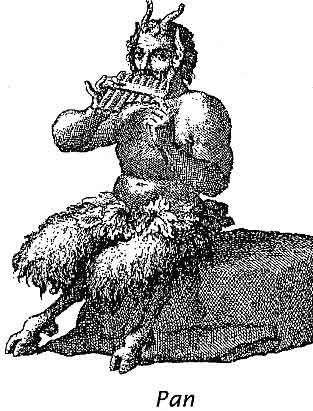














































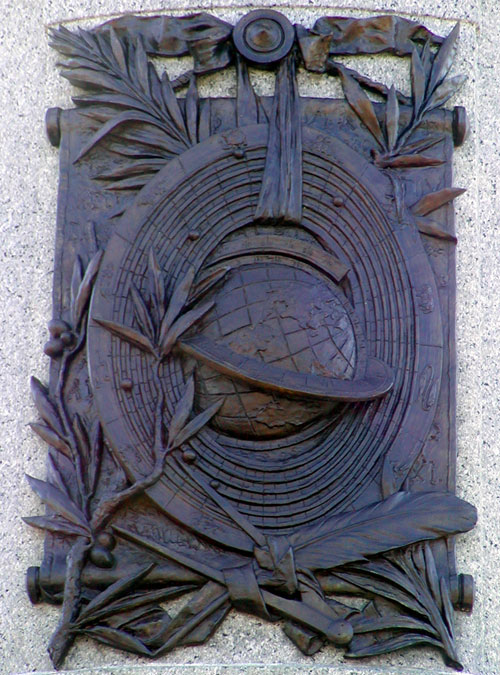







































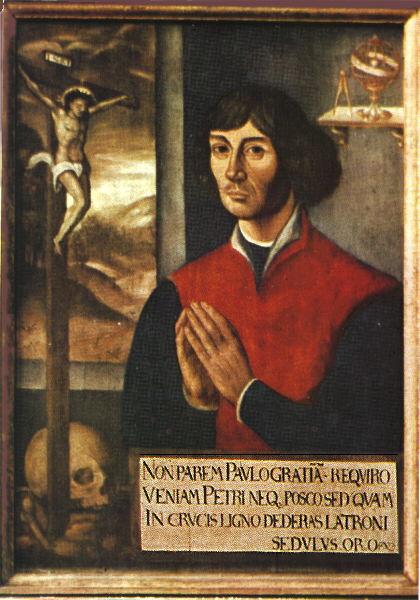















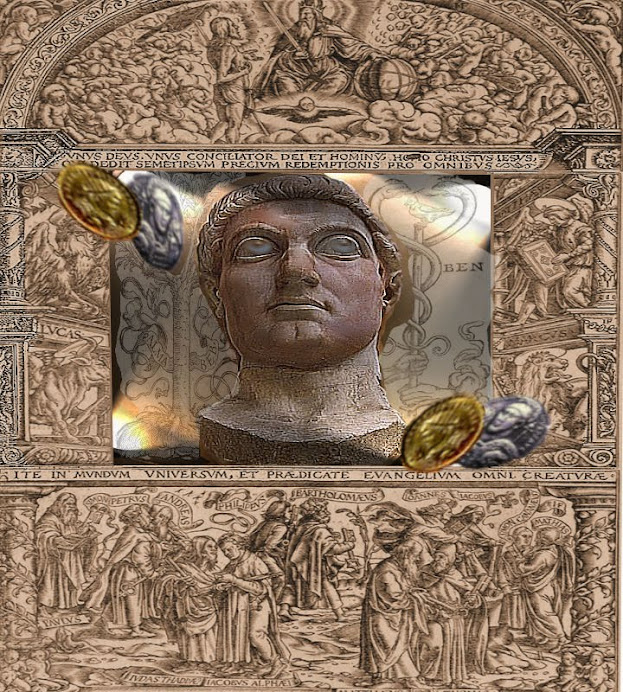



















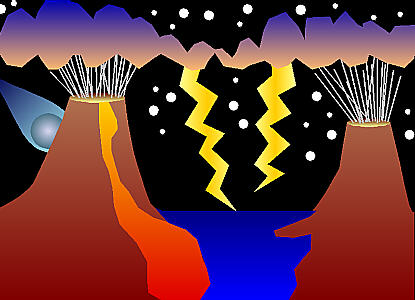


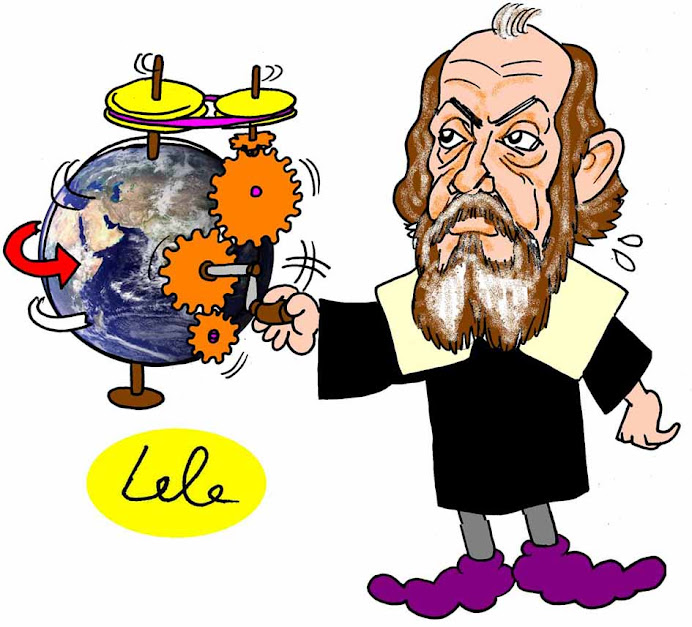













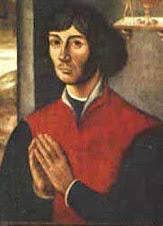.jpg)



















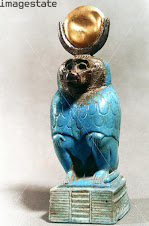








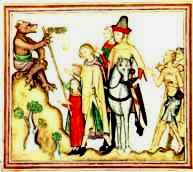

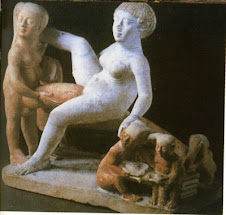











.jpg)






























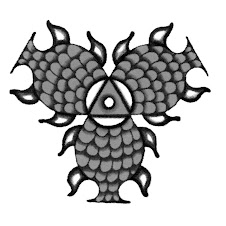











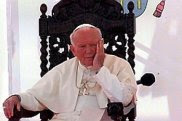















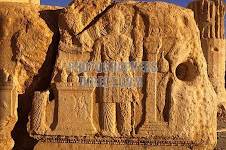
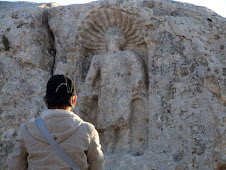






.gif)


























































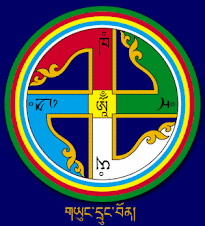

























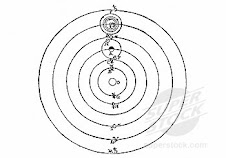

.jpg)













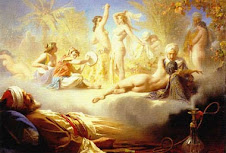
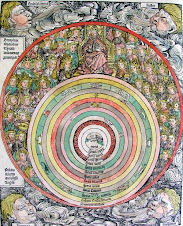












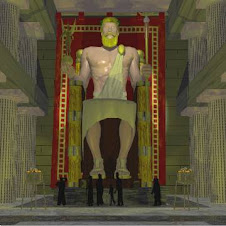


















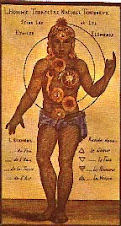






















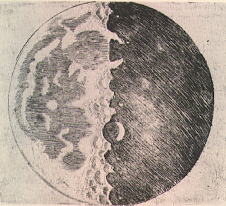




















































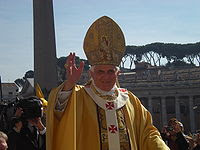

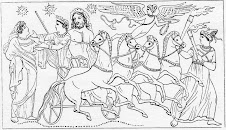








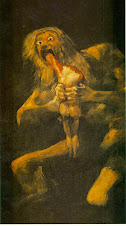




















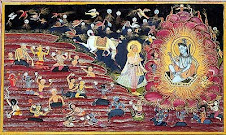

















++of+the+Sun+god..jpg)

